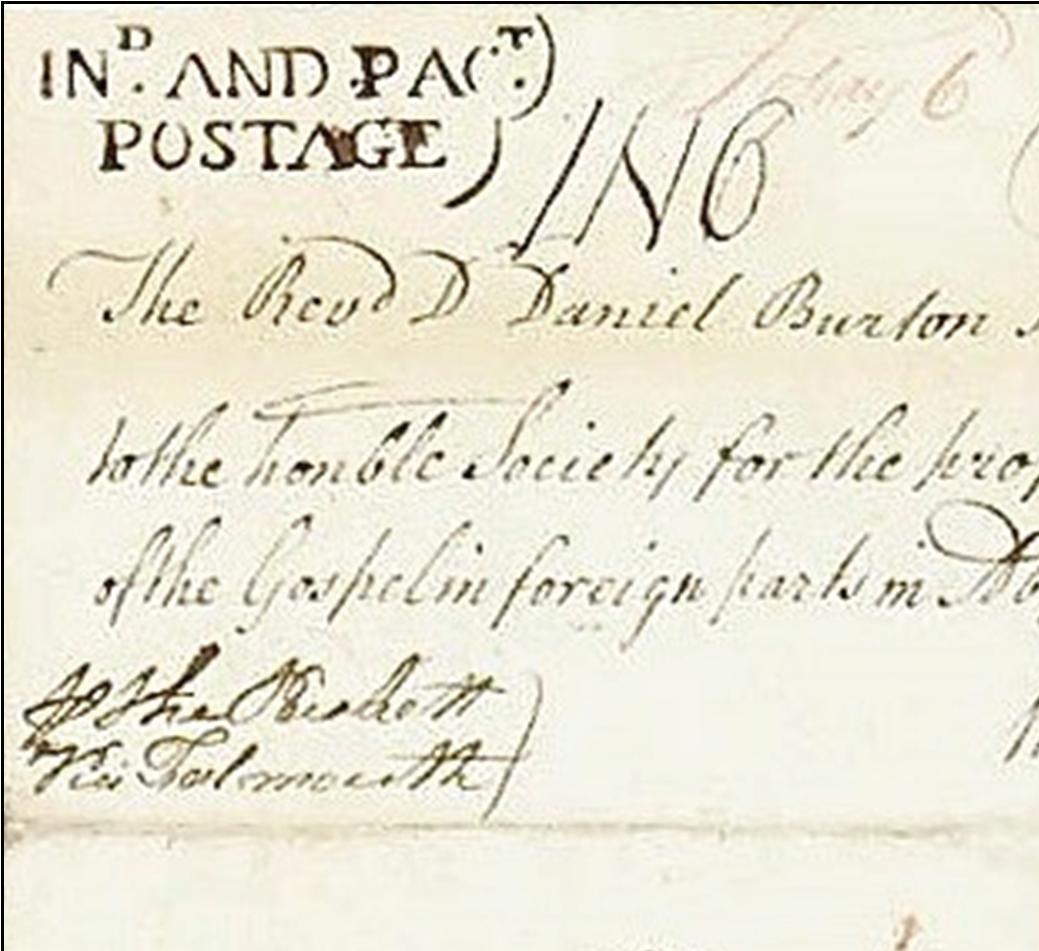

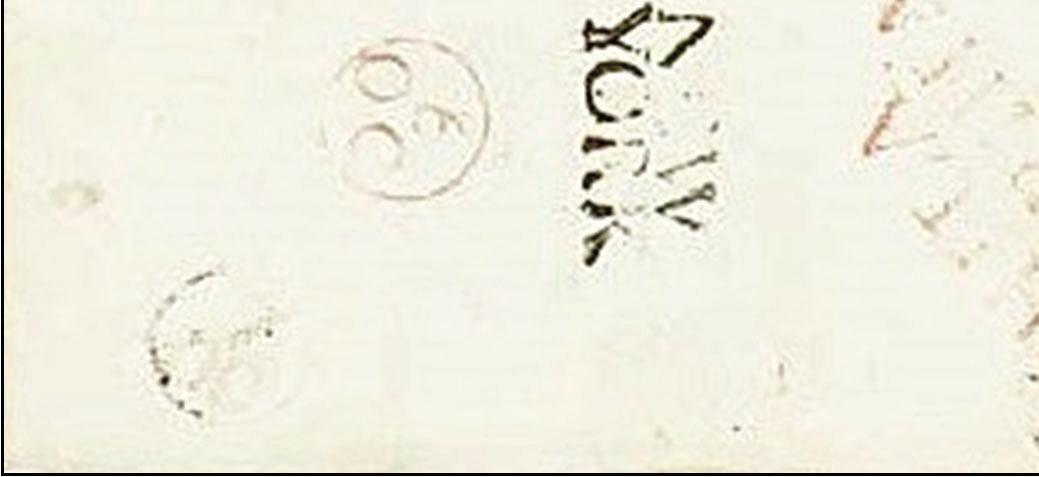
Handstamp Town Postmarks on Colonial British Packet Mails Volume 101 Number 5 $10 Sept. / Oct. 2022 | Hindenburg 's First Flight • Raman Spectrum • To The Five Boroughs, Part 1 • Mulready: Conception to Destruction Collectors Club Philatelist
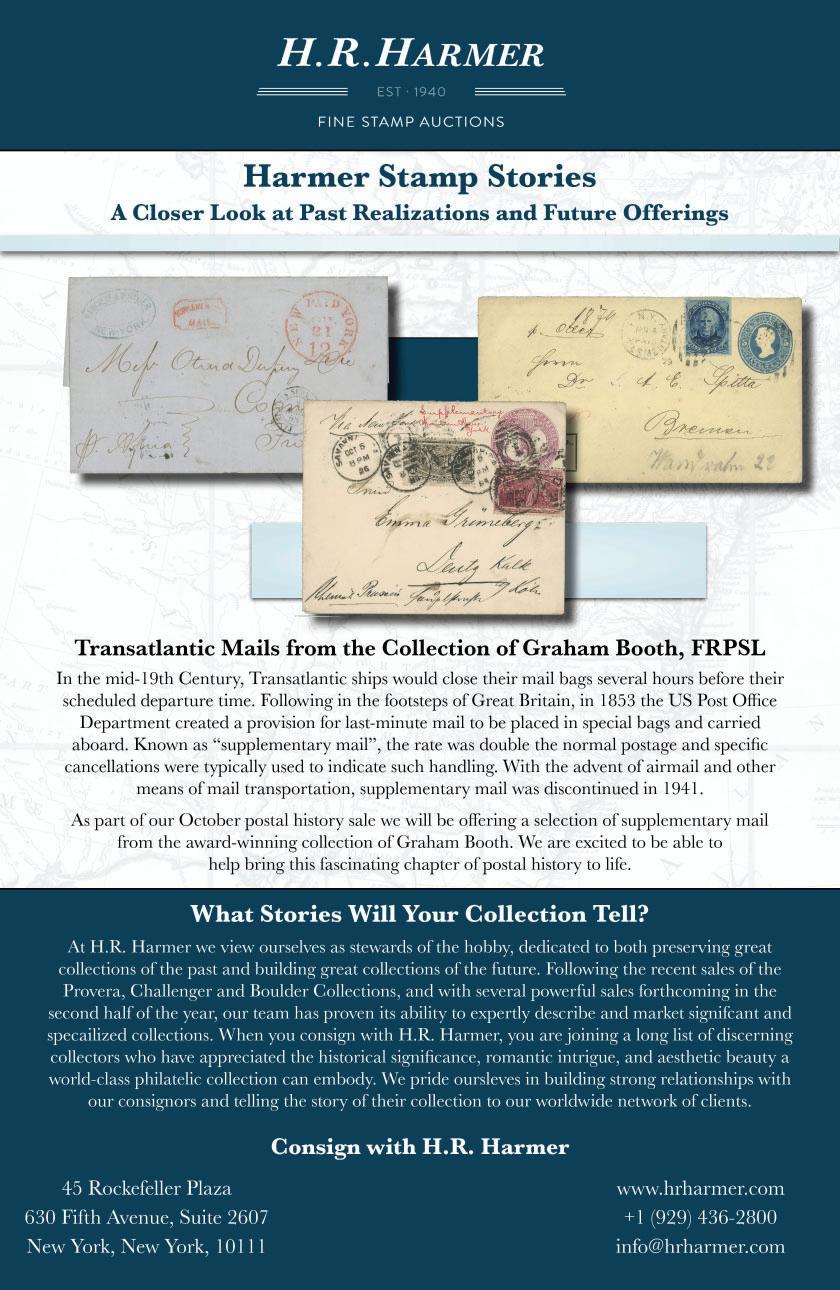
Layout and Design: Jason E. Youngblood jyoungblood@gmail.com
Publications Committee” John Barwis, RDP Robert Gray James Grimwood-Taylor, RDP Matthew Healey Daniel M. Knowles, MD Robert P. Odenweller, RDP (member emeritus)
Advertising Manager: Robert Gray robertgray@me.com
Book Review Editor: Dr. Luca Lavagnino, Europe
Editorial Correspondence: wystamps@gmail.com
Business Correspondence: 11 West 42th St., 2nd floor, New York NY 10036 Tel. (212) 683-0559 email: info@collectorsclub.org
Essential Elements : Research Your Cover by Jim Peterson 268
Handstamp Town Postmarks on Colonial British Packet Mails by John H. Barwis 270
Zeppelin Hindenburg's First Flight to North America, 1936 by Cheryl R. Ganz 277
Raman Spectrum Analysis of 1888 San Francisco Red Cancel by Mel Kravitz RPSL 282
To the Five Boroughs Part 1 - Manhattan by Matthew Healey 290
The Mulready: Conception to Destruction by Thomas Slemons, FRPSL 300
Noted in Passing on the Auction Block by Matthew Healey 309
CCNY Relocation Update 312
CCNY Library Update 313
website: www.collectorsclub.org
Executive Secretary and Librarian: Andrea Matura collectorsclub@collectorsclub.org
Editor: Wayne L. Youngblood wystamps@gmail.com Authors’
Book Review: Paolo Bianchi - Lettres de la Grande Armée ... by Giorgio Miglavacca 317
The Collectors Club Philatelist (ISSN 0010-0838) is published bimonthly in January, March, May, July, September and November by The Collectors Club, 22 East 35th St, New York NY 10016–3806. A subscription to The Collectors Club Philatelist is included with dues paid by members of The Collectors Club. Subscription price for nonmembers in the United States is $70. Prices for foreign addresses and/or other classes of mail are higher depending on actual cost; consult publisher. Subscriptions for outside the United States should be paid in U.S. funds drawn on a U.S. bank. Back issues $9, including postage. For a complete list, write the publisher. Claims for undelivered issues will be honored only within six months of the date of publication. Beyond that, replacements will be provided at the single copy price. Periodicals class postage paid at New York, New York 10001 and additional offices. Office of Publication: The Collectors Club, 11 West 42th St., 2nd floor, New York NY 10036. Copyright@ 2022 by The Collectors Club. All rights reserved. We do not give implied or other consent for copying for more than personal use. Indexed in PhiLindx by E.E. Fricks and included in the article index of the American Philatelic Research Library and the Global Philatelic Library. The opinions and statements contained in the articles are those of the authors and not necessarily those of The Collectors Club, its officers or staff POSTMASTER: Send change of address to: The Collectors Club Philatelist, 11 West 42th St., 2nd floor, New York NY 10036.
257 Volume 101, Number 5 Collectors Club Philatelist
Departments President’s Message............................................................................259 Editor's Notepad .....................................................................................261 Programs .................................................................................................260 Lichtenstein Award Nominations .....................................................264 Membership ............................................................................................318 Index to Advertisers ............................................................................320
Collectors
The
Club Philatelist Sept.-Oct. 2022 Volume 101, Number 5
are
Guidelines for the CCP
available from the editor.
THE COLLECTORS CLUB
11 West 42th St, 2nd floor, New York NY 10036 (212) 683-0559

The Collectors Club is open Monday through Friday, 10 a.m. to 5 p.m. Please call ahead if intending to visit.
Officers Governors
President Lawrence Haber Vice President Robert Gray Secretary Matthew Healey Treasurer Roger S. Brody, RDP Chief Technology Officer Joan Harmer
Class of 2022
Robert Gray Lawrence Haber Matthew Healey Daniel J. Ryterband Wade E. Saadi, RDP
Class of 2023
Roger S. Brody, RDP Vincent Cosenza Joan Harmer Kathryn Johnson
Class of 2024 Ozan Gurel Mark E. Banchik Lawrence J. Hunt Stephen Reinhard Robert G. Rose
The Collectors Club Philatelist is an international specialty journal serving the needs of hundreds of collectors worldwide. It serves as the journal of record for the Collectors Club as well as publishing stimulating and helpful articles for collectors of many levels and specialties. The Collectors Club Philatelist strives to publish accurate philatelic information and serves as a forum for communication among members of The Collectors Club.
www.collectorsclub.org
258
September-October
2022
President’s Message
Lawrence Haber
As stamp collectors – philatelists – many of us manage several collections, all seemingly simultaneously. I have always been in awe of those able to keep multiple things straight. My mind is much too cluttered to permit this particular form of mental gymnastics. It is easier for me to keep things simple and focus on just one collection at a time. Although I have several collections, I focus best on one at a time. Consequently, I frequently forget what I have lurking in the albums lining the wall in my stamp room.
The other day, I pulled out a couple of albums that hadn’t seen the light of day for a few years. I wanted to show some of my “stuff” to friends. As I turned the pages, I experienced a sense of wonder. As it was turned, each page showed new surprises and delights. Is wonderment the word? It was fun recovering my memory and enjoying this wonderful hobby.
We had the same experience of rediscovery as we packed up the Clubhouse for the movers. It is one thing to be aware of our material and books. It is an altogether different experience to handle the material personally – to hold the books in your hands. Sure, we knew we had the items in the library at the Clubhouse, but encountering them anew is a special feeling.
There are wondrous items in our Clubhouse. Old albums and catalogs from before the turn of the 20th century; photographs of club dinners from the 1910s; a Confederate adversity letter written on repurposed wallpaper; a treasure trove of John Luff’s philatelic medals; the gold medallion signifying Alfred Lichtenstein's selection as the leading philatelist of the first half of the 20th century. Wow! Plus, we had a lot of philatelic material, (i.e. stamps) stored in the Clubhouse vault— some exceptional collections donated by members years ago.
Amongst all this, we came across something extraordinary. We found a portfolio containing a group of hand-drawn images of architectural details, mostly lighting fixtures. The firm that produced them, “Cassidy Company, 101 Park Avenue, New York City,” was stamped in the upper left-hand corner of each page. One of the images we found was a lighting fixture in the form of a globe (shown on the facing page. This may have been an early drawing of the lighting fixture that hung in the center of the second floor of 22 East 35th, between the front lounge and the presentation room. This globe forms the basis of our club's current logo. The drawing is exquisite and has multiple colors and fanciful images drawn into it. Not having been around at the time, we surmise that this was an early sketch that eventually led to the final design. This sketch is to be treasured and preserved. We hope to display this in our new clubhouse and not have it just squirreled away in a vault.
Why do I bring all of this up? What does it have to do with anything?
We recognize the mixed emotions you may have regarding this move. Many of our members have great affection for the stairs, the columns and the very fabric of the building. There are memories of conversations with many greats of
Collectors Club Philatelist
259 Volume 101, Number 5
our hobby. So, there is a natural fear that with our leaving the building, we will lose sight and contact with our past.
This is not going to happen.
Let’s take, as an example, the Luff medals. They were on a display table in the second-floor lounge. A lamp rested on top of the glass. We needed a locksmith to open the display table. There was no “write-up” for the medals. I don’t think people knew they were there. I doubt any attention was paid to them – at least not for a long time. Unfortunately, the medals have deteriorated. We will need to have them conserved. We will do this, but, more importantly, they will be displayed appropriately. These things matter.
There were some real treasures in our vault, but no one saw them. They were locked away. Because of our move, we recognize these items anew and will make them accessible. Could we all agree to make precious philatelic material available for viewing or returned to the philatelic market? Sitting in a vault – unseen –does no one any good. Our library was split into four separate rooms. In our new home, it will be united into a single space. Isn’t that the way it ought to be? I was speaking with a member the other day, and it became clear that this division of the library was not helpful. I asked him to imagine the entire library on the same floor. The word is accessible. Our truly amazing collection of journals will no longer be figuratively buried in the basement, and our rare books in a rarely visited third-floor room. And we now have control over our auction catalogs. Plus, they are now being properly stored.
We all collect stamps and covers. By nature, we seek to preserve and retain. We have been doing this at the club and will continue to do so. But we will make these gems available and visible.
We have started to discuss details with our architect, and our new home will be an extraordinary place. I promise. What will make it even better will be your plan to see the clubhouse in our new space? Stay tuned. Good things are worth the wait.
Collectors Club Programs 2022-23
Oct. 12 Victoria Postal History, John Barwis, Holland, Mich.
Oct. 19 Indian Military Mail During the WWI Era, Robert Gray, Livingston, N.J.
Nov. 2
Evolution of a Thematic Exhibit - Blood: a Modern Medicine, Jean Wang
Nov. 16 Virginia Dare, Mark Schwartz, Philadelphia, Pa.
Dec. 7 Federacion InterAmericana de Filatelia Presentation, Yamil Kouri (Cuba), Guillermo Gallegos (El Salvador) Henry Marquez (Peru).
Dec. 21 Special Holiday Program: Christmas, Chanukah, and Kwanzaa, Randy Bergstrom Dr Mary Love Irv Osterer Greg Philipson 2023
Feb. 8 Fraud of the Century: Britain’s Post Office Telegraphs and the Stock Exchange Forgeries of 1872, Matthew Healey, New York, N.Y. May 3 CC One-Frame Exhibition
More details as they become available, www.collectorsclub.org
260 www.collectorsclub.org September-October 2022
Editor’s Notepad
 L. Youngblood
L. Youngblood

Is a New Standard Due?

Certain stamps and sets, such as these 1930 Zeppelins, have always been considered “Blue Chips” of the hobby. Many of these types of stamps and sets exist in significantly higher quantities than their current asking prices would indicate.
Those who use auction realizations, dealer sales and internet sales figures to prognosticate the relative health of the hobby in the United States typically use so-called “blue-chip” stamps to make their point. Under those circumstances, our hobby market would appear to be either somewhat stale or retracting slightly. I would suggest that this model must – of necessity – change. Soon. So-called “Blue Chip” stamps of the United States include No. 1 and No. 2 (the 5¢ and 10¢ 1847 issues), dollarvalue Columbians, 1926 White Plains sheet, Zeppelins and other stamps that are expensive, if not scarce.

The hobby itself in the United States isn’t unhealthy, exactly, but it continues to change rapidly. Investors are long gone, as are dealers who carried deep stocks of better items to protect their value. In their place is a new breed of collector/dealer, who buys, sells and trades based on opportunity, immediate cash flow and – often – more unusual material.
As a result, many of those traditional “Blue Chips” are not performing as well as the rest of the market, such as postal history, scarce varieties, high quality and back-of-the-book material. Why?


In a word, these stamps have always been a protected class by dealers and catalogs, with supplies that typically far outstrip demand – or at least demand at the prices asked. The comparison in British philately is the venerable Penny Black. There is no shortage of these stamps if one wishes to plunk down the money.

For the United States, however, let’s take, for example, the 1930 set of Zeppelin stamps,

261 Volume 101, Number 5 Collectors Club Philatelist 15, rue du Jeu-de-l’Arc 1207 Geneva, Switzerland ◆ info@letimbreclassique.com ◆ www.letimbreclassique.com We travel the whole US for important collections Anders Thorell 011 41 78 717 82 94 Gaël Caron 011 41 79 102 43 21 Geneva Office 011 41 22 760 11 11 Next Auction : Geneva, October 25 - 26, 2022 Call us to t day!
Wayne
Although they are a stand-out, the 2013 Vintage Seed Packet booklet of 20 (face value 46¢ each, $9.60 for the booklet, when sold), have leaped in catalog value from $20 (roughly standard double face) to $50 in the 2022 Specialized, and that value has been significantly superceded since.

Scott C13-C15. The total number of these printed and distributed: 93,536 of C13, 72,428 of C14 and 61,296 of C15 are small numbers, to be sure. Compare this to the 1953 3¢ 300th Anniversary of New York City issue, Scott 1027, which boasts a hefty 115.7+ million printed and distributed. Common sense would dictate the Zeppelins should, indeed, cost a lot more to acquire. But one must also take into consideration the survival rate of stamp issues when considering relative value.
In the case of the Zeppelins – a high-value issue released during the Depression and created primarily for well-heeled collectors – the survival rate is very near 100%. The Columbians and White Plains sheet also boast very high survival rates, and there have always been deep supplies of our nation’s first stamps of 1847.
Added to this is the fact that a set of Zeppelin sheets was broken about 10 years ago, adding an additional 50 sets of these expensive stamps to an already saturated market. This is demonstrated by the catalog value drop for a set – just since the 2016 Specialized – from $1,900 MNH and $1,155 hinged, to $1,640 and $1,060, respectively, in the 2022 edition, a roughly 14% drop over just a fiveyear period.
Compare this with the 2013 Vintage Seed Packets issue, with a reported distribution of 400 million. The 2016 Specialized listed that pane at $20, or roughly double face value, the standard listing markup.
Between a combination of high demand and (ironically) a limited supply, the value of those stamps has steadily risen each year. The 2022 Specialized listed them at $50 per pane, and I wholesaled my entire supply to another dealer for full catalog value. They are currently selling on eBay (actual sales, not “asking”) for prices ranging from $50-$75. The market is speaking; are we listening?
I realize that comparing high-value Zeppelins to recent commemoratives isn't exactly an apples-to-apples comparison. However, my point is that our historical “Blue Chip” stamps do not really serve as a valid barometer of the health of the philatelic marketplace.
I think we should at least open a dialogue to address this issue.
www.collectorsclub.org
262
September-October
2022
Of course, high-quality stamps have always performed well – and they continue to do so – with near-perfect stamps (or at least older ones) still bringing record prices. The reasoning, of course, is that the pool of high-quality classic stamps can only dwindle over time, as stamps become damaged or destroyed, and certainly no more will be created.
Let’s take a quick look at graded stamps.
About 30 years ago, as Professional Stamp Experts (PSE) and others first eyed up the slabbed rare coin market and tried to apply its standards to stamps, I was adamantly opposed to slabbing and let my feelings be very openly known. Clearly, no thought had been given to either exhibiting or mounting on an album page.
When I glimpsed my first slabbed stamp, I remarked it looked much more like a coffee coaster than a collectible and predicted its failure in fairly short order.
Despite having a “100” perfect grade, this “slabbed” stamp reminds the author more of a coffee coaster than a fine collectible.
Fast forward several decades and, indeed, slabbing is pretty much a thing of the past, but not grading, which appears to be here to stay.
Despite the very real fact that stamp grading – to some extent – will always be subjective and can yield slightly different results each time it is applied to the same stamp (that can have an impact of hundreds, if not thousands, of dollars), the basic theory is sound. Select those stamps that are not only in the finest condition, but are the most visually appealing as well, grade them, assign a numerical value and let the market do the rest.

And the market is speaking. High-grade U.S. stamps through at least the mid-1930s continue to perform well, usually bringing close to both Scott and PSE (Stamp Market Quarterly) indicators for premium stamps.
As the population reports of graded stamps continues to stabilize, a true market for them is emerging, with the wild swings in valuation smoothing out. This is the one area of philately that may eventually lure solid investors, rather than those looking for an overnight killing. Only time will tell.
www.collectorsclub.org

263 Volume 101, Number 5 Collectors Club Philatelist
Keep up to date with what’s happening in your club:
Lichtenstein Award Nominations
The Awards Committee of the Collectors Club is pleased to invite all members to submit nominations for next year’s Lichtenstein Award, one of the world's most prestigious philatelic awards.
The Alfred F. Lichtenstein Memorial Award for Distinguished Service to Philately is annually given to living individuals for outstanding service to philately. The award was established in 1952 in honor of Alfred F. Lichtenstein (Aug. 6, 1876 – Feb. 24, 1947), one of America’s most accomplished philatelists.
Past recipients have hailed from across the globe, spanning Europe, Asia, Latin America and North America. Past winners of the Alfred F. Lichtenstein Memorial Award for Distinguished Service to Philately can be seen on our web page.
In 1996, the Collectors Club named Alfred Lichtenstein the Outstanding American Philatelist for the first half of the 20th century, an honor much applauded by the philatelic world. During his lifetime, Lichtenstein built some of the most significant collections ever formed: Canada and the Provinces, Switzerland, Cape of Good Hope, Mauritius, Uruguay, Argentina and U.S. Western franks.
Lichtenstein was a strong supporter of the Collectors Club and was instrumental in its growth and prominence in world philately. He and Theodore Steinway led the drive for funds to acquire its current home. The first recipient of the Alfred F. Lichtenstein Memorial Award was Steinway, his personal friend and devoted coworker.

Nominations for the 2023 Lichtenstein Award may be placed into consideration by any member of the Collectors Club, and any philatelist is eligible for the award.
Instructions and the Nomination Form may be found on our website. The information is found at www.collectorsclub.org/Lichtenstein%20Nomination/ with a clickable link to the instructions and form.
All nominations are due by Sept. 30, 2022, and are to be submitted to Stephen Reinhard, Chair, Lichtenstein Award Committee, PO Box 110, Mineola NY 11501-0110, or via email to stephenreinhard42@gmail.com
www.collectorsclub.org
264
September-October 2022
Autumn General Auction Series



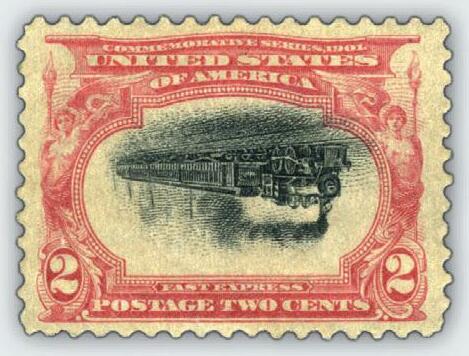
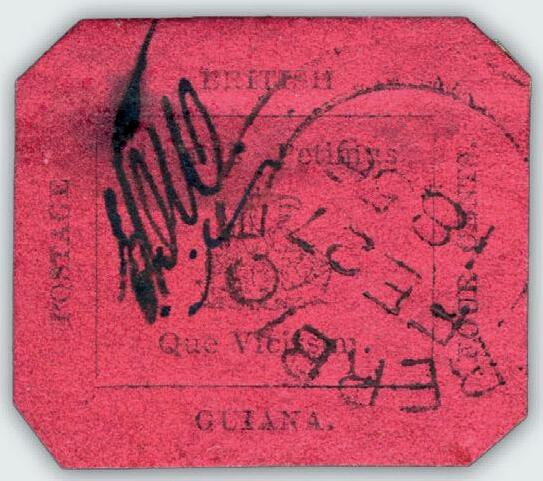

th th
International Auctioneers


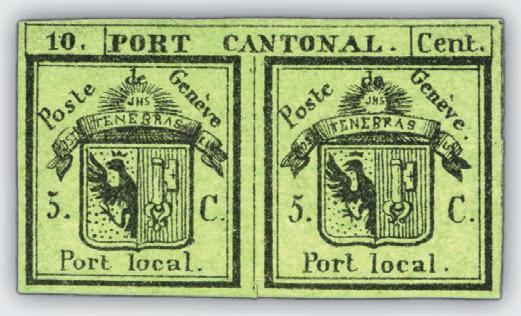

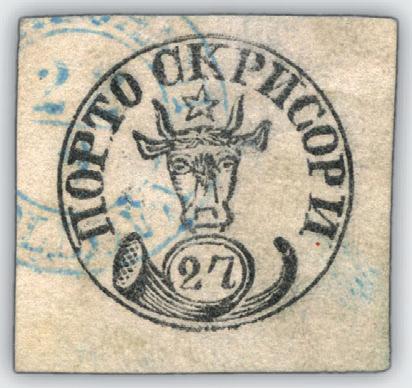



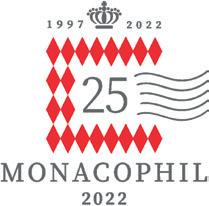

davidfeldman.com
David Feldman


CONSIGNMENTS WELCOME AT ANY TIME! We are searching for: Traditional and Specialised “One Country Collections” “All World” Collections · Estates · Rare Stamps & Covers · Postal History Order the auction catalogues now! HIGHLIGHTS 379th Heinrich Köhler Auction 19–24 September 2022
·
Collections
Germany’s Oldest Stamp Auction House
German States The ERIVAN Collection
8th Auction The Rolf Rohlfs Collection The Rolf Rohlfs Collection The Eliahu Weber Collection (part III) The Rolf Haspel
The Peter Rogers Collections Special Collection The Larry C. Parks Collection
Competence, Tradition, Quality. German and International Philately since
1913

1858, Medio Peso rose red, the error of colour in pair with 1 Peso, used on entire letter from Tacna to Cochabamba. A great rarity.
Provenance: Schatzkès Collection, Norman Hubbard


Java Paris

letter from Stuttgart via Trieste, Alexandria and the ‘Overland Mail’ to the Island of Java, at Alexandria additionally franked with strip of four 3 pence rose, tied by “B01”.




1871, the “Henri Kastler” cover – only recorded fully franked registered cover with combination franking of Alsace-Lorraine and France.
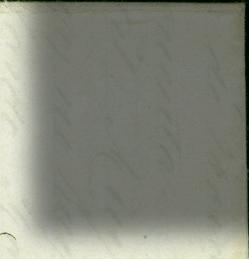
Hasengartenstr. 25 65189 Wiesbaden, Germany





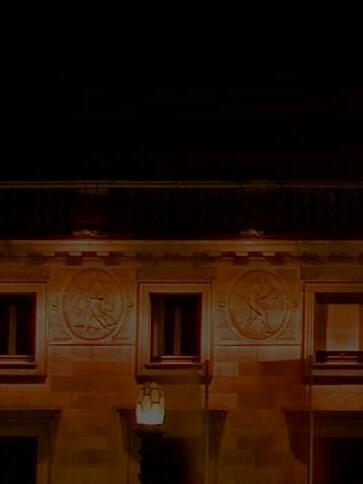


www.heinrich-koehler.de info@heinrich-koehler.de

267
Number
Collectors
Volume 101,
5
Club Philatelist Heinrich Köhler Auctions
Essential Elements
Research Your Cover
Jim Peterson
Pictured above is a Civil War patriotic cover used from Anamosa, Iowa. It’s a fairly common design that’s shown in William Weiss’ book, The Catalog of Union Civil War Patriotic Covers, with a listing of FT-77. The stamp is a common Scott No. 26. The date in the CDS of July 29 makes the year most likely to be 1861. The target killer is a little different than the most commonly seen type used in that era. From there things get interesting.

Research gives some interesting information on the recipient, David Sheean, as well as a little information on the possible letter writer and one other person, John A. Rawlins. David Sheean would become a notable lawyer in Illinois. He went to California in the early 1850s to mine for gold, returning to Galena in 1856. He went into the practice of law with John Aaron Rawlins in 1858. In politics he was a Jackson Democrat and his views on the Civil War probably led to his January 1862 arrest and imprisonment on the penal island of Fort Lafayette, where he was held without the benefit of habeas corpus. Meanwhile, Rawlins went on to serve on the staff of Gen. Ulysses Grant. Sheean was eventually released late in 1862, possibly with help from Rawlins (and Grant), without ever knowing what he had been charged with. He would return to Galena and later become the town’s attorney and mayor. He died in January 1920 at the age of 86. As for Rawlins, he served throughout the war with Grant, first as acting adjutant and finally as Chief of Staff with the rank of brigadier general. Due to his service, Grant appointed him Secretary of War in 1869, but he would die in office in September of that same year at the age of 38.
We can speculate as to the writer of the letter, once contained within the cover, but it is most likely a younger brother, Jeremiah Sheean, as he was a lawyer practicing in Anamosa at this time. He also happened to be married to John Rawlins’ sister, Mary. His life may have been shortened a bit, as he drowned in the Wapsipinicon River while bathing on Aug. 28, 1897, at the age of 62.
268
September-October 2022
www.collectorsclub.org
British Commonwealth Revenues
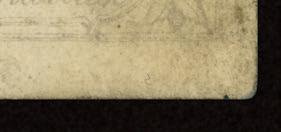











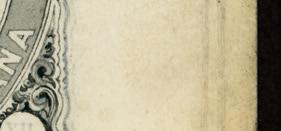







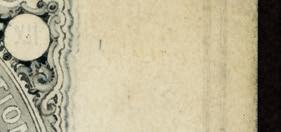








269 Volume 101, Number 5 Collectors Club Philatelist The wonderful collection of British Commonwealth Revenue Stamps formed by Michael Medlicott FRPSL will go under the hammer in our London auction room later this year. The collection covers the whole Commonwealth and contains well over 100 unique items, including artist’s essays, proofs, and colour trials as well as the issued stamps and their usage, including some spectacular large format documents.
Stanley Gibbons are proud to announce an exciting Signature auction for the Autumn Season 26th October 2022 For further information please contact our Head of Commonwealth, George James. Email: gjames@stanleygibbons.com 399 Strand London WC2R 0LX AUCTIONS @StanleyGibbons /StanleyGibbonsGroup @StanleyGibbons 26TH OCTOBER 2022
The Michael Medlicott Collection
Handstamp Town Postmarks on Colonial British Packet Mails
John H. Barwis
Prior to November 1755, letters to or from the 13 American colonies were almost always sent unpaid by private ship. The Bristol-New York British packet service had begun in September 1710 for a rate of 1/- but was short-lived and was ended in 1715 after only 10 round-trip voyages.1
The le tt er shown in Figure 1 was unusual in that it was sent via private ship to Lisbon, where it connected with the British packet service to Falmouth. The le tt er was probably intended for the Edgley , a Bristol packet that never reached New York, but had limped into Philadelphia for repairs, then departed for Nevis. This le tt er was carried overland from Philadelphia to New York, where it was put aboard ship Andrews for Lisbon. At Lisbon, the le tt er went via British packet Queen for Falmouth, where it arrived on Nov. 18.
Figure 1. Philadelphia, Aug. 29, 1712, to Liverpool via New York and Lisbon. Ship Andrews from New York for Lisbon on Aug. 25, then packet Queen to Falmouth. London rated 1/6d., the packet rate from Portugal, then uprated to 1/10d. to include inland postage to Liverpool. NO/21 Bishop backstamp.

In November 1755, Great Britain introduced a monthly packet service between Falmouth and New York at a rate of one shilling, plus inland postage. The primary purpose was to speed communication with military units engaged in the Seven Years War, what Americans often call the “French and Indian Wars.” The FalmouthNew York packets continued until 1827, with various interruptions during armed conflicts. A complete list of these packet sailings can be found in Olenkiewicz (2018).2
Sterling was scarce in the 13 American colonies, so debts, including postage due, were usually paid with local currency. Each of the 13 American colonies issued its own paper money, so postage due on letters arriving from Great Britain was first converted to sterling, then reconverted to the relevant colony’s currency.

270 www.collectorsclub.org September-October 2022
Figure 2. London, Sept. 11, 1756, to Philadelphia, New York. Sent on packet General Wall, Falmouth Sept. 11, New York Nov. 8. Three pennyweights were due for inland postage to Philadelphia, which was converted to 1/3d. in Pennsylvania currency. Pennsylvania’s inflation factor was 1.66: (3dwt = 9d. sterling; 9d. x 1.66 = 15d =1/3d. sterling)
The letter shown in Figure 2 was posted in London on Sept. 11, 1756, prepaid 1/- for packet postage to New York from Falmouth. There was neither the requirement nor the facility to prepay colonial postage in Great Britain.
John Reynell, the recipient of this letter, was a wealthy Philadelphia Quaker and friend of Benjamin Franklin. His fortune came from an international trade business in American lumber, Caribbean sugar and European manufactured goods. An extensive trove of Reynell’s correspondence resides at the Pennsylvania Historical Society in Philadelphia.
A GPO London notice of Oct. 24, 1755, required prepayment of the packet letter rate, but on Sept. 3, 1768, a notice appeared in the London Gazette that made
Figure 3. Sent unpaid on packet Lord Hyde from Falmouth on April 16, 1767; arrived at New York on May 28. New York rated 18 pennyweights due; triple 4 dwt packet rate plus triple 2 dwt colonial inland rate from New York to Philadelphia. The 28/MA handstamp is the socalled Franklin postmark.
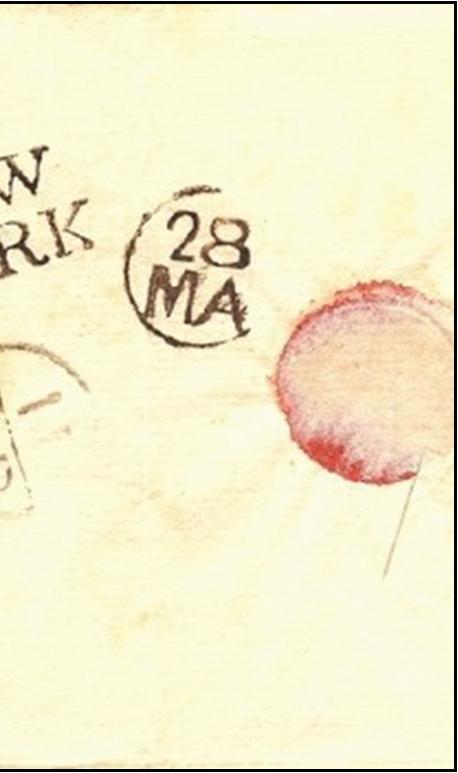


271 Volume 101, Number 5 Collectors Club Philatelist

prepayment optional anywhere within the British dominions (meaning both Britain and the colonies)3. Prepayment was then reiterated in a GPO notice of May 22, 1784. An example of flaunting the prepayment requirement is illustrated in Figure 3. That letter was posted unpaid on April 11, 1767, in London, where it was marked 3/- due “p Packet via N York.”
In 1769, postage due markings began appearing on unpaid letters from the American colonies to Great Britain. Some controversy exists with respect to where the markings were applied, as no official records mentioning these postmarks have been found in the United Kingdom or the United States. Most American collectors, including myself, assume they were colonial markings. Do any Collectors Club members have positive proof of an origin at Falmouth or London?
Figure 4 shows an early example of postage due in London. A table of all recorded examples appears at the end of this article.

Figure 4. Philadelphia to Westminster, Oct. 6, 1772. Packet Duke of Cumberland from New York Oct. 11, arriving Falmouth Nov. 12. Rated 1/6d. due, 6d. Colonial plus 1 / Falmouth packet. “IN.D AND PAC.T POSTAGE.” Six examples are recorded in the period Oct. 1772 to Oct. 1774.

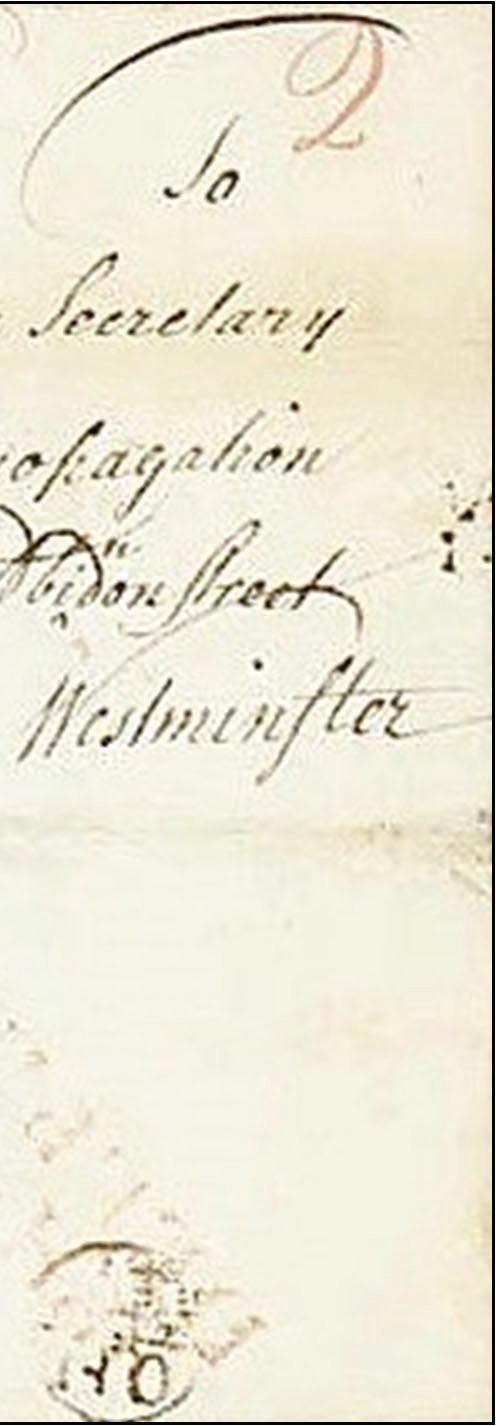
Figure 5 shows is a letter to London written in Temoka Cowpen, Fla., on April 14, 1773, carried overland to St. Augustine, then sent via ship Britannia to Charleston, S.C., for the Falmouth packet service. Charleston packet Swallow carried the letter to Falmouth. This is a double-rate letter with postage due to cover two voyages.
www.collectorsclub.org
272
September-October
2022
Figure 5. Temoka Cowpen, Fla., to Charleston via St. Augustine via Packet Swallow from Charleston Aug. 12, arriving Falmouth Sept. 12, 1773, Rated 4/- due.


Inland and Packet Postage
Figure 6 shows a cover posted in Philadelphia on April 4, 1775, marked “To pay 6d” for colonial inland postage from Philadelphia to New York. The letter was sent overland to New York by stage for the Falmouth packet, endorsed for delivery at the Jamaica Coffee House in London. This is the latest-recorded cover bearing these types of postage due handstamps.


Figure 6. Philadelphia April 4, 1775, sent unpaid to New York for the packet to Falmouth. Packet Duke of Cumberland, departing New York April 6, arriving Falmouth May 4, 1775. Rated 1/6d. due, 6d. inland postage plus 1/- packet. “AM.N & PAC. POSTAGE”
The lists that follow record all the examples known to me, based on my own collection and auction sales over the past 30 years. I would welcome additions and corrections, as well as opinions as to where these postmarks were applied. Thanks are due to Bernard Biales who helped create the cover census.
273 Volume 101, Number 5 Collectors Club Philatelist
References
1.Sanford, O.R., and Salt, D., 1990, British Postal Rates, 1635 to 1839, page 57.

2.Olenkiewicz. J., 2018, British Packet Sailings, Bristol-North America: 1710-1715; FalmouthNorth America: 1755-1840, and Mail Boats, www.rfrajola.com/mercury/1710-1840%20 Falmouth-%20North%20America.pdf
3. Robinson, D., 1990, For the port and carriage of letters, a practical guide to the inland and foreign postal rates of the British Isles 1570 to 1840, Appendix 3: Combined British and American Rates, page 242.
Cover Census DateOriginDestinationPostmark
Jan. 27, 1769Waterbury, Conn.LondonAMERICAN POSTAGE / PAID July 29, 1769Philadelphia, Pa.LondonINLAND AND / PACKET POSTAGE March 14, 1770Fredericksburg, Va.LondonAMERICAN POSTAGE / PAID Jan. 15, 1772Trenton, N.J.LondonIN.D AND PAC.T / POSTAGE
Handstamp Dates
AMERICAN POSTAGE / PAID (18mm circular date stamp)
Jan. 27, 1769; March 14, 1770
Inland and Packet … (cursive) Aug. 2, 1771 (Applied in Philadelphia)
INLAND AND PACKET POSTAGE
IN.D AND PAC.T POSTAGE
July 29, 1769; March 5, 1772; Jan. 1, 1773; Jan. 5, 1773; July 12, 1773; Sept. 6, 1773; Dec. 10, 1773; April 12, 1774; Sept. 3, 1774
Jan. 15, 1772; 1/-/1772; April 3, 1772; April 5, 1772; Oct. 6, 1772; March 26, 1774; April 5, 1774
INLD & PACT POSTAGE Sept. 5, 1774; Oct. 10, 1774
AM.N & PAC. POSTAGE April 4, 1775 (two recorded from Philadelphia)
AMERICAN INLAND POSTAGE DUE Oct. 13, 1781 (Montreal)
www.collectorsclub.org
www.collectorsclub.org
274
September-October 2022
up to date with what’s happening in your club:
Keep
Jan. 1772Williamsburg, Va.LondonIN.D AND PAC.T / POSTAGE
Feb. 8, 1771Philadelphia, Pa.WestminsterInland and / Packet Postage March 5, 1772Portsmouth, N.H.LondonINLAND AND / PACKET POSTAGE April 3, 1772Eglington, N.S.ScotlandIN.D AND PAC.T / POSTAGE
Oct. 6, 1772Philadelphia, Pa.WestminsterIN.D AND PAC.T / POSTAGE
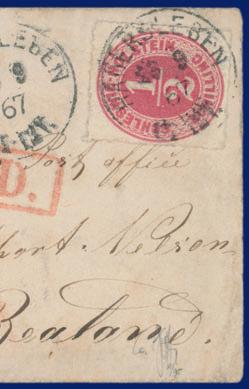



Jan. 5, 1773Philadelphia, Pa.PooleINLAND AND / PACKET POSTAGE Jan. 26, 1773Philadelphia, Pa.PooleINLAND AND / PACKET POSTAGE

April 5, 1773Philadelphia, Pa.LondonINLAND AND / PACKET POSTAGE Sept. 6, 1773York, Pa.LondonINLAND AND / PACKET POSTAGE Dec. 10, 1773Albany, N.Y.LondonINLAND AND / PACKET POSTAGE March 26, 1774Reading, Pa.LondonIN.D AND PAC.T / POSTAGE
April 12, 1774Temoka Cowper, Fla.LondonINLAND AND / PACKET POSTAGE Sept. 3, 1774Philadelphia, Pa.DorsetINLAND AND / PACKET POSTAGE Sept. 5, 1774Fairfield, Conn.WestminsterIN.D AND PAC.T / POSTAGE Oct. 10, 1774St. Augustine, Fla.LondonINL.D & PAC.T / POSTAGE April 4, 1775Philadelphia, Pa.LondonAM.N & / PACKET POSTAGE Oct. 15, 1781Montreal, CanadaLondonAMERICAN INLAND / POSTAGE DUE
275 Volume 101, Number 5 Collectors Club Philatelist
SELLSCHOPP AUKTIONEN Our 3rd auction offered a Wilhelm Sellschopp Auktionen GmbH • Neuer Wall 10 • 20354 Hamburg • Germany Phone: +49 40 593 623 290 • e-mail: info@sellschopp-auktionen.de • www.sellschopp-auktionen.de
• Excellent consignment conditions, free of any additional costs (‘flat fee all-inclusive’)
• Send us your material free of charge as a parcel with DHL or Fedex


• Very strong international client network (over 179,000 potential clients all over the world)
• International auctions 3 times a year
• Reasonable commissions for the Brokerage of consignments














276 www.collectorsclub.org September-October 2022 Consign or sell now! ALL BENEFITS AT A GLANCE 4 7142 follow us In philately you can discover something new every day ...
• • • • • • • • •
•
•
•
•
•
Zeppelin Hindenburg’s First Flight to North America, 1936
Cheryl R. Ganz
The German zeppelin Hindenburg landed at Lakehurst, N.J., at 6:10 a.m. on Saturday, May 9, 1936, after a transatlantic flight of over sixty-one hours. In addition to passengers and freight, the airship carried twenty sacks of mail, weighing more than two thousand pounds. A post office truck met Hindenburg and rushed the mail sacks to the waiting American Airlines DC-3 for a special connecting flight for passengers and mail to the Newark airport. From there, mail traveled by regular means to the New York City General Post Office (later renamed the James Farley Post Office) for distribution nationwide. The 9 a.m. receiving postmark indicates that processing the mail was underway only a couple hours after the zeppelin landing.

277 Volume 101, Number 5 Collectors Club Philatelist
Figure 1. Post office mail truck and Hindenburg at mast shortly after arrival at Lakehurst, N.J., on May 9, 1936, and before ground crews walked the zeppelin into Hangar One. Robert Yarnall Richie, photographer. Courtesy the DeGolyer Library, Southern Methodist University.
Hindenburg, the world’s largest flying post office, subsidized operations by carrying and servicing mail, freight and passengers. The zeppelin provided the first regularly scheduled, entirely by air, post service between Europe and North America. As a sub-post office of the Frankfurt, Germany, post office (located at the train station, Bahnpostamt 19, Frankfurt Main), Hindenburg offered onboard mail service during flight. For most of its 63 flights in 1936 and 1937, passengers and crew could purchase German postage stamps and post mail aboard. Hindenburg’s postmaster applied an onboard postmark and prepared the mail for onward transmission after landing.
Figure 2. Postcard written and mailed aboard Hindenburg

Lady Grace Drummond-Hay sent one of the postcards posted aboard Hindenburg on its first westbound North America flight. A Hearst newspaper journalist and veteran zeppelin flyer, Lady Drummond-Hay had logged more than 50,000 miles on Graf Zeppelin. She was the first woman to fly westbound over the Atlantic Ocean as a Graf Zeppelin passenger in 1928. The next year she became the first woman to fly around the world, also aboard Graf Zeppelin. She was a zeppelin passenger to Egypt, South America and on many “first” flights.
It was only natural that Drummond-Hay would be on Hindenburg’s first North America flight, from Friedrichshafen, Germany, to Lakehurst, N.J. Unlike 1928, however, she was not the only female passenger. Among the 50 passengers on the first flight were Clara Adams, journalist Martha Elizabeth Brooke, Pauline Charteris (wife of passenger author Leslie Charteris), Margaret Leeds (wife of passenger Walter Scott Leeds), Erla Parker, Erika Plange (wife of passenger Georg Plange), journalist Madame Titayna, novelist Countess Rosa Grãfin von Waldeck and Lady Suzanne Wilkins (wife of passenger explorer Sir Hubert Wilkins).
278 www.collectorsclub.org September-October 2022
by passenger and journalist Lady Grace Drummond-Hay.
While still aboard, Drummond-Hay wrote and mailed a letter to Clara Adams. “I cannot tell you how happy I was to find you on board the Hindenburg as one of the passengers on her first flight from Germany to America. I hope we will meet again as ‘companions in adventure’ when the next Zeppelin is completed, and that once more we will pioneer a path through the air together.”1 These were days and adventures to cherish. Sadly, in World War II, the Japanese interned the British aristocrat widow Drummond-Hay in the Philippines, where she became ill. After the war, she traveled to the United States. She died, age 50, in 1946 in New York City.


Drummond-Hay penned one of her postcards on May 8, the day before landing, and addressed it to Laura Peralta at Culver City, California’s, Meralta Theatre. She wrote, “Loving greetings from the zeppelin Hindenburg on the first North transatlantic flight. I do look forward to seeing you! G.” DrummondHay then posted the card in the mail slot, conveniently located in the passenger Reading and Writing Room. Hindenburg’s postmaster Max Zabel collected the mail and canceled the stamps with the special onboard postmark, translated as “German airmail/Europe-North America/Airship Hindenburg/May 8, 1936/1st flight.” Zabel added the card to the small quantity of onboard mail for dispatch separate from the majority of mail, held in sealed mailbags in a postal storage compartment.
Addressee Laura Peralta and Pearl Merrill opened the Meralta Theatre (name combined from both women’s last names) in 1924 at 9632 Culver Blvd. in Culver City. The two business partners had a long friendship and traveled the vaudeville circuit for many years as “Ella Fant and Miss Kito.” Merrill was the large mammal and Peralta the tiny, and no doubt bothersome, insect. Their theatre building offered both live performance and films. It also included retail shops and apartments. The two women lived above the theatre. Pearl worked
Collectors Club Philatelist
279 Volume 101, Number 5
Figure 3. Lady Grace Drummond-Hay (18951946). International press photo, cropped.
Figure 4. Laura Peralta. Courtesy of Culver City Historical Society.
in the real estate and insurance businesses, as well as served on the school board. Laura served as president of the Culver City Woman’s Club. A fire demolished the theatre in 1943 and the operations relocated. The women had the theatre rebuilt after World War II. Following Pearl’s death in 1961, Laura remained in her apartment over the theatre, constructed so she could watch films from a special room. In 1983, redevelopment resulted in Meralta Plaza replacing the theatre.
Hindenburg flew more than 2,000 pounds of mail on its first North America flight. This story tells of only one of those pieces of mail. Lady Drummond-Hay and Peralta were friends, professionals, exceptional women and celebrities. They connected through a message written over the ocean and sent across the American continent.
References
Thank you to Dan Grossman, Patrick Russell and M.T. Sheahan. Airship LZ 129 Hindenburg lands at Lakehurst Naval Air Station in New Jersey. www.youtube.com/watch?v=qp5zRK1YAc0 (retrieved Feb. 6, 2021).
Cerra, Julie Lugo, An Independence Day Treat from the Archives. www.culvercityhistoricalsociety.org/ (retrieved Feb. 6, 2021).
Counter, Bill. Los Angeles Theatres. losangelestheatres.blogspot.com/ (retrieved Feb. 6, 2021).
Drummond-Hay, Lady Grace, Lady Hay Drummond-Hay comments on Zeppelin Hindenburg flight www.youtube.com/watch?v=FrA65nVhp-s (retrieved Feb. 6, 2021).
Ganz, Cheryl R, “Zeppelin Hindenburg’s Onboard Postmarks and the Final Flight,” Collectors Club Philatelist, July-August 2012, pp. 215-220.
Grossman, Dan. www.airships.net (retrieved Feb. 6, 2021).
Grossman, Daniel; Ganz, Cheryl; and Russell, Patrick, Zeppelin Hindenburg: An Illustrated History of LZ-129, History Press, London, 2017, 2019.
Wanamaker, Marc., Culver City’s Meralta Theatre. www.culvercityhistoricalsociety.org/ (retrieved Feb. 6, 2021).
Endnotes
1. Letter from Grace M. Drummond-Hay to Clara Adams, May 8, 1936, www.airships.net/airship-people/lady-grace-drummond-hay/ (retrieved Feb. 6, 2021).
2. Saadi, Wade, 1997, “The Knapp Shift – U.S. Philately’s Great Controversy,” The Chronicle (49): pp. 257-259.
www.collectorsclub.org
280
September-October 2022
Invite a another collector to attend the next online event of the Collectors Club. You never know who may be the next Alfred Lichtenstein!

281 Volume 101, Number 5 Collectors Club Philatelist
Figure 1a.
Raman Spectrum Analysis of 1888 San Francisco Red Cancel

 Mel Kravitz RPSL
Mel Kravitz RPSL
Figure 1b.
282
September-October 2022
www.collectorsclub.org
This short piece involves the determination of the San Francisco incoming red transit ink, used on mail from China, passing through the U.S. Post Office Department at San Francisco in 1888 receiving a transit CDS in red ink. This evaluation will be made using Micro Raman spectrometry, on a letter sent from Peking China in 1888 to Utica, N.Y., shown to the left in Figures1a and 1b.

Figure 1a, and 1b (top left and bottom left). Customs Post office Peking ‘Mail Matter’ letter sent to Utica, N.Y., March 6, 1888. The “San Francisco Cal PAID ALL” transit CDS letters in red ink are relatively clear and represent good test points. The “L” of ”CAL” will be used as test point No.1. Initially the 785nm laser will be used, backed up, if necessary, by the 532nm laser, since this may be Cinnabar ink, which is better detected using the 785nm laser.
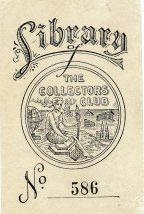

283 Volume 101, Number 5 Collectors Club Philatelist
Don’t forget! Our library is a great member resource! Online CCNY Library information is available www.collectorsclub.org/the-collectors-club-library/
Figure 2. Test setup, using the x50WLD microscope in the Class I enclosure of the Renishaw Invia Raman instrument.
Figure 3. San Francisco transit CDS ink at test point No. 1, the “L” of CAL, as shown above illuminated using the x50WLD microscope.

Figure 4. San Francisco transit CDS August 1888 ink at test point No. 1 magnified x50 and the corresponding raw Raman spectrum. The 785nm laser used at 0.1% power or 1.13 milliwatts, 15 sec. scan time, repeating two times. The ink is not Cinnabar ( HgS).
www.collectorsclub.org

284
September-October 2022
Figure 5. San Francisco transit CDS August 1888 ink at test point No. 1, with base line corrected, Raman spectrum. With peaks at 477, 1114, 1257, 1316, 1427, 1495 and 1530 Raman shift / cm -1. This ink does not appear in a saved library; research of the existing literature will be required for matching and compound identification.
Figure 6. Expanded Raman spectrum of San Francisco transit CDS August 1888 ink at test point No. 1. The literature resulted in a match to research on Cochineal lake dye. The published Raman spectrum is shown in Figure 7.

285 Volume 101, Number 5 Collectors Club Philatelist

Conclusion and Comments

The ink used at the San Francisco post office in August 1888 to mark incoming transit mail from Asia – in this case China – was determined to be Cochineal Lake Dye, not an ink at all. Made from the Cochineal beetle (Dactylopius coccus), this dye was used by the Aztecs 1,500 years ago. Spanish explorers imported it into Europe to be used as a clothing dye. Renaissance artists used it, as well. It so far appears unique to the post office at San Francisco as an incoming marking ink. On outgoing mail, the CDS mark was hand stamped in a black ink. Testing of a similar “red” ink on an 1870 cover from New Haven, Conn., to Paris, one with a similar red color shade origin cancel, yielded Cinnabar (HgS). To date only two arrival letters in the United States from China dated 1886 and this cover 1888 have been tested, with both yielding the same result.
www.collectorsclub.org
www.collectorsclub.org
286
September-October 2022
Figure 7. Silvia Innocenti, Marilena Ricci, Giancarlo Lanterna, Raffaella Fontana, Jana Striova, Maurizio Becucci, “Direct microextraction for red lakes detection in painting layers by Raman spectroscopy,” The European Physical Journal Plus, October 2021.
Keep up to date with what’s happening in our club:
Addendum: Color determination can be easily fooled by the naked eye
Figure 8. Letter to Paris.
The New Haven ink and the San Francisco ink color on the cover shown in Figure 8 are very similar and chemically different, a bright red, redder than the New York “PAID” ink (Orange red). However, both red inks on this 1870 cover yield Cinnabar (HgS), a totally different compound than the Cochineal Lake dye.

Figure 9. The Raman spectrum of the New Haven Red ink is the spectrum of cinnabar. The shades of red vary under the x50 microscope with identical bright red areas, but totally different compounds.
Cochineal Lake dye has an organic chemical formula of C22H20O13, while Cinnabar is an Inorganic compound, Mercury Sulfide, HgS.

287 Volume 101, Number 5 Collectors Club Philatelist
Guidelines for Articles
TEXT. All text for articles should be sent as a simple Word document using the “Normal” style – please don’t attempt to format for the magazine! Bold text, italics and tabs are ok. Text files may be sent as an email attachment or submitted via CD. Please, do not embed illustrations in your text document! Show the preferred location if you wish (or send a separate PDF showing your preference), but leave actual illustrations out. Send them separately. Simple, plain text always works best.
ILLUSTRATIONS. Illustrations are always preferred electronically as scans. Scans must be sized at a minimum of 100% and scanned at 300 dpi as TIF or JPG files for optimal quality. Internet transmittals, such as WeTransfer (preferred) may be used. A typical cover should be at least 1,500 pixels wide. If you do not have access to a scanner, originals may be sent. We will make scans and return originals immediately by the same method as they are sent to us.
As a last resort, images may be sent to us as high-quality photocopies (hard copies made using a color laser copier and mailed to us). Again, please do not embed images in the text.
DEADLINES. The deadline for the receipt of articles, letters, advertising and news is the first of the month preceding the month of publication. For example, we need everything for a March-April issue by Feb. 1, September-October materials would need to arrive by Aug. 1, and so on. Your attention to – and compliance with – these standards will assure the highest-quality journal we can produce. Thank you for your contribution!
288
September-October
www.collectorsclub.org
2022
For Best Results Please Scan Illustrations at 300 dpi

289 Volume 101, Number 5 Collectors Club Philatelist
To The Five Boroughs Part
I: Manhattan
Matthew Healey
The majority of letter mail from Great Britain to North America in the 19th century was destined for New York City, the center of commerce. The vast majority of mail to New York either went to some street in lower Manhattan or was simply left unaddressed, as the U.S. Post Office’s trusty carriers would have been expected to know where to find businesses and well-to-do households – or the recipient would have been expected to call for his or her mail.
Besides lower Manhattan, letters to downtown Brooklyn are not uncommon, but beyond that, 19th-century mail to other parts of what would become, by 1898, the five boroughs of the second-largest city in the world – including the Bronx, Queens, Staten Island and anyplace in Manhattan north of 23rd Street – is rare.
Figure 1. An 1865 cover addressed to Robert Nutty, care of the Harsenville post office on what would become New York’s Upper West Side.

I was therefore delighted to acquire the cover shown in Figure 1, posted in Dublin on April 7, 1865, franked with a 1-shilling green Queen Victoria (watermarked Heraldic Emblems) and addressed to a Mr. Robert Nutty, care of the “Harsenville Post Office” at 75th Street in New York. For good measure, a second location, 83rd Street and 10th Avenue, is also given, perhaps as the place where Mr. Nutty could be found living or working. Unusually for personal mail of that era, there is a return address at lower left, which I’ll discuss later.
Being a New Yorker of Irish and British descent, I find mail from the Emerald Isle to the Big Apple appealing for personal reasons, particularly when it looks like it might have a story to tell about the bygone city. This cover was a research project calling my name.
290
September-October 2022
www.collectorsclub.org
If you’ve never heard of Harsenville, don’t fret; neither had I. There is no place called Harsenville in New York today, nor any post office by that name on what is now the Upper West Side.
Long ago, of course, there was a Harsenville, named for the Harsen family, descendants of Dutch settlers who owned a farm in the area during the 18th century (apparently the soil was good for tobacco). Harsenville is counted among the “lost villages” of the Upper West Side that were swept away, along with Bloomingdale, Carmansville, Seneca Village and others, by the urban encroachment of Manhattan’s famous street grid. Although that grid was officially adopted in 1811, the full development of “uptown” didn’t take place until the 1890s. At the time of Nutty’s letter, this part of Manhattan Island was still small farms and fading estates, dotted with the occasional homesteads, churches and collections of shacks, which coalesced here and there into villages.
The New York Public Library, New-York Historical Society and others provide plenty of historical maps, paintings, engravings and vintage photographs online. Perusing these, it is evident that while many blocks and buildings in lower Manhattan are preserved today largely as they appeared 150 or even 200 years ago, uptown in 1865 looked nothing like today.
Here were fields and trees. The 1851 Dripps map, which shows houses and roads, depicts a sparsely populated area. A decade and a half later, not much had changed; most of the streets still weren’t much more than a line of survey markings. The 1865 Viele map pictured in Figure 2 shows a landscape topography of hills and brooks, with just a ghostly overlay of the future grid. This includes 9th, 10th and 11th Avenues, later to be renamed Columbus, Amsterdam and West End Avenues, respectively, in an effort to paint the neighborhood as more respectable than the derisively nicknamed Hell’s Kitchen to the south.

Broadway, whose bowtie-shaped intersection with Amsterdam at 72nd lies right in the heart of old Harsenville, was still colloquially the Bloomingdale Road, a meandering country lane that had served as the post road to Albany and Boston since colonial days.
Collectors Club Philatelist
291 Volume 101, Number 5
Figure 2. Detail of an 1865 map of New York by Egbert Viele, on which Manhattan’s original topography is overlaid with the future street grid.
In 1861, the historian Benson John Lossing described the road as “a hard, smooth, macadamized highway, broad, devious, and undulating, shaded the greater portion of its length, made attractive by many elegant residences and ornamental grounds, and thronged every fine day with fast horses and light vehicles, bearing the young and the gay of both sexes.”

292
September-October
www.collectorsclub.org
2022
Figure 3. The Somerindyke House was a landmark homestead along the Bloomingdale Road around 75th Street. It is claimed that Louis Philippe of France was once a guest there.
At the road’s intersection with 75th Street stood a house of some renown: the Somerindyke estate, shown in Figure 3. A sprawling affair in the style of traditional Dutch colonial farmhouses that can still be seen up and down the Hudson Valley, it is said to have hosted none other than Prince Louis Philippe, future King of the French, during his exile in the United States. Valentine’s Manual, a compendium of New York City history published annually during the 19th and early 20th centuries, ran an illustration of Louis Philippe teaching a group of schoolchildren in the living room of this house, although its hard to be certain whether the scene was real or apocryphal.
Figure 4. The lost villages of the Upper West Side are steeped in romance, exemplified by this almost Gothic drawing of an abandoned-looking homestead titled The Last of Harsenville.
293 Volume 101, Number 5 Collectors Club Philatelist

Did Robert Nutty stay at this house, or someplace very close by? Short of uncovering a family history, we have no real way of knowing. The house was clearly a popular subject for artists, for a quick internet search turns up numerous drawings. Some convey its fading grandeur, while others seem to show it as abandoned and crumbling. The N.Y. Public Library holds a drawing dated to 1873 titled The Last of Harsenville. Shown in Figure 4, it depicts a wild, darkly romantic place, far removed from the bustling city that would presently replace it.
Modern developments were beginning to roll up the road in the form of telegraph wires, street lights and paving. In 1868, three years after the arrival of the Nutty cover, the Somerindyke house was torn down. The following year Broadway was widened, through the eminent-domain seizure of adjacent land from farms such as the Harsens’, and dubbed “the Boulevard.”

The Harsenville post office happens to have been one of New York’s shortestlived: records show it was established in 1861 and discontinued just two years later, having been served by a single postmaster, Philip Bonstell (or Bonesteel), whose compensation exceeded total receipts in each of the years he served. Nutty’s letter missed his term of office altogether.
There was—and still is—a post office on 83rd Street close to what used to be 10th Avenue, and it is possible that the secondary address on the cover refers to this, rather than Nutty’s abode. Later known as Station W, its former location on the south side of the block between Columbus and Amsterdam is still marked by the inscription over the entrance to a Crunch gym, shown in Figure 6. The post office was relocated in 1937 to the north side of the block a few yards to the east and christened “Planetarium Station,” presumably a nod to the astronomy hall that opened at the nearby American Museum of Natural History two years before.
294
September-October 2022
www.collectorsclub.org
Figure 5. Farm life on the Upper West Side lingered through the 1870s. The Brennan Farmhouse shown is reputed to have hosted Edgar Allan Poe.
It would take some time for all of the old farmhouses of the Upper West Side to disappear completely. Figure 5 shows an 1879 photograph of one of the last, the Brennan farmhouse at 84th and Broadway, perched high on a rock. Edgar Allan Poe is said to have stayed there once. At the left of the frame can just be made out one of those new-fangled telegraph poles.


295 Volume 101, Number 5 Collectors
Club Philatelist
Figure 6. The Station W post office, on 83rd Street just east of 10th Avenue, occupied this building until 1937, when it moved across the street.
Figure 7. The gentleman in this photograph, also named Robert Nutty, was born in Dublin in 1865, the year the cover was mailed. Was he related, and if so, how?
As for the addressee himself, I spent quite a while searching Ancestry.com and other sites, where I exhumed a couple of candidates who had been born in Dublin and wound up in New York City. Our man could have been the Robert Nutty who slipped in via Canada, undocumented, as was often the case, took up abode on 86th Street with a wife and two daughters and is buried with them in Trinity Church cemetery on Riverside Drive; it’s possible he’s the same Robert Nutty listed in an 1872 city directory as a contractor living on 48th Street. He might have been the uncle of the handsome namesake shown in Figure 7, born in Dublin the year the letter was sent, featured in a family-history blog at thenuttychronicles.com. There were many Irish immigrants to New York at this time, enjoying a variety of circumstances from hardscrabble to wealthy, and it would be hard to pinpoint the man without spending an eternity on genealogical research. Suffice to say, he wasn’t the King of France.
April 1865, meanwhile, was an eventful month. Gen. Lee surrendered at Appomattox on the 9th and the “Awful Event” at Ford’s Theater happened on the 14th; the following morning Lincoln was “with the angels” or “with the ages,” depending on whose recollection of Edwin Stanton’s bedside utterances you prefer.
As to how the Nutty letter reached New York, Hubbard and Winter's North Atlantic Mail Sailings 1840-75, suggest it was carried on the Cunard ship Persia, which left Queenstown (Cove) on the 9th and arrived in New York on the 19th. The cover was marked as fully prepaid, with 5¢ (2½d out of the shilling) credited to the United States for delivery uptown. Within three years, the transatlantic postage would drop to sixpence and, in 1870, it would be halved again, to 3d. In those days, the norm was for postage rates to go down, not up – such were the dividends of industrial progress.
If the place where the letter’s journey ended was so very different then than now, the opposite is true of its place of origin. As mentioned before, there is a return address at lower left. Perhaps it was a tacit admission that the sender was not entirely sure of his correspondent’s address. The writing is small and spidery, but it’s possible to make out the name Is (short for Isaac? Isaiah? Isidore? Isambard? or perhaps James?) Nutty, 1 Lr. Ormond Quay, Dublin. Was this Robert’s brother – father – nephew?
Ormond Quay Lower, as it is called today, begins where Capel Street meets the River Liffey, on the north side, just steps across the bridge from Dublin’s City Hall. Remarkably, this scene has hardly changed in 225 years. The building that stands on the corner today, numbered 1 on both the street and the riverfront, is the same elegant, Georgian edifice we see on the left in James Malton’s 1797 aquatint shown in Figure 8. Fancy townsfolk mingle with beggars; a pair of Redcoats ride by on horseback, followed by a bugler. On the wall of the Capel Street facade is a sign for The Old State Lottery Office. The children in the picture, had they lived long enough, could have been acquainted with Mr. I. Nutty as he sat writing letters there, seven decades later. Had they time-traveled to 2022, they would recognize this spot without difficulty.
As it turns out, this cover tells not one story but several: how its point of origin and destination took their opposing trajectories, the exurban wilderness of Harsenville vanishing under the bright lights and bustle of Broadway, while the grand thoroughfares of Joyce’s “dear dirty Dublin” fell upon hard times, the
296 www.collectorsclub.org September-October 2022
houses on the quay neglected yet preserved, their fortunes once again looking up with the arrival of a new century.
In both a literal and a metaphysical sense, this letter passed from the old world to the new. In the 10 days it took to cross the ocean, America was transformed: the Civil War came to an end, Lincoln was assassinated and everything changed. Nutty may have been an ordinary fellow, but the tales his mail can tell are extraordinary.

297
Volume 101, Number 5 Collectors
Club Philatelist
Figure 8. By contrast, Ormond Quay Lower, in central Dublin, has scarcely changed in 225 years, as these views from 1797 and 2022 attest. Aquatint by James Malton and photograph by Google.
CORINPHILA – YOUR CO WILL BE IN THE BEST CO M













CORINPHILA AUCTIONS – A TRADITION OF SUCCESS


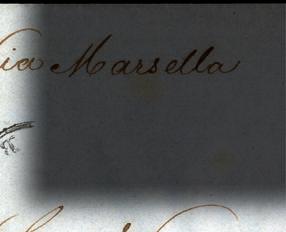
As the oldest stamp auction house in Switzerland, situated in the international financial centre of Zürich, we at Corinphila Auctions really know the market.






The most specialised philatelic knowledge, fastidious presentation and an international customer base with strong purchasing power guarantee the highest prices.
www.collectorsclub.org
298
September-October 2022





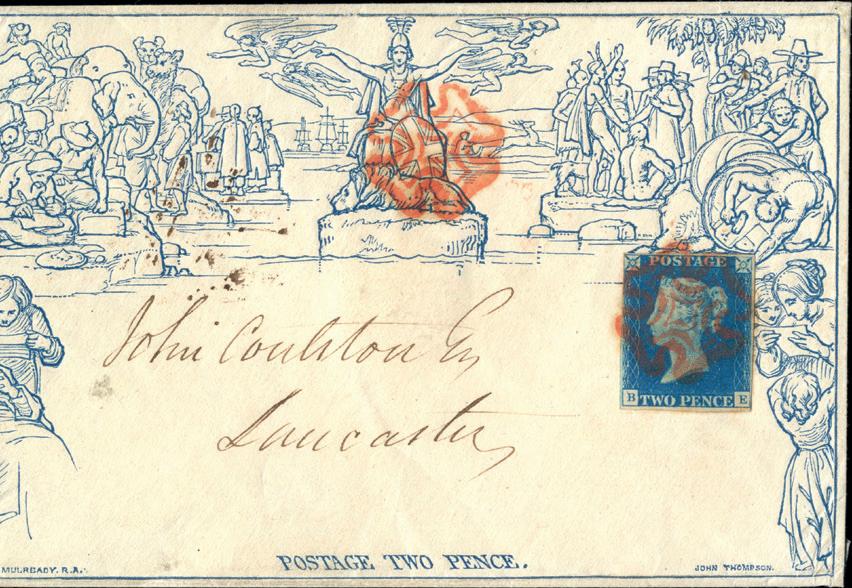

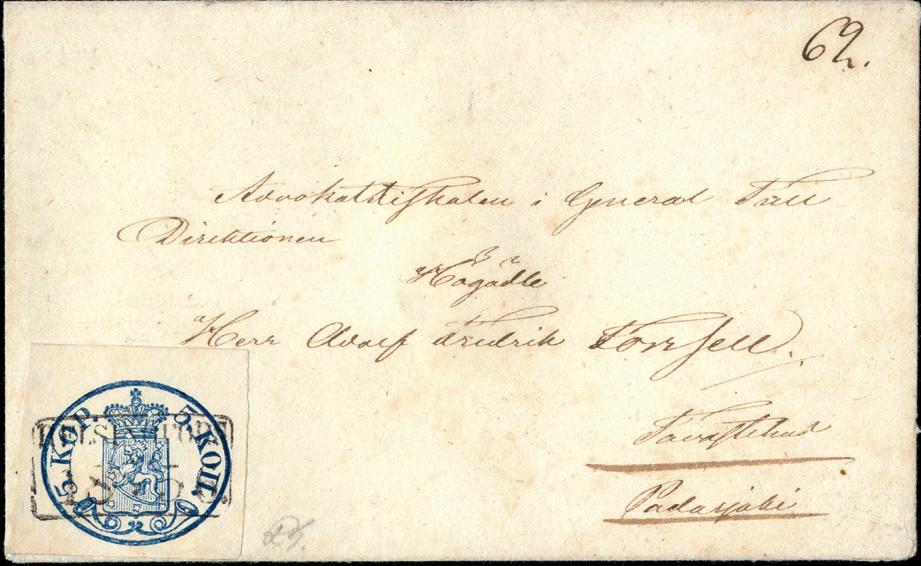



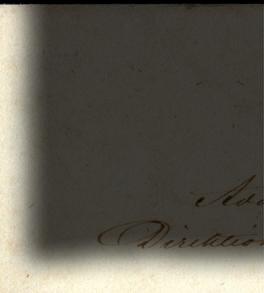



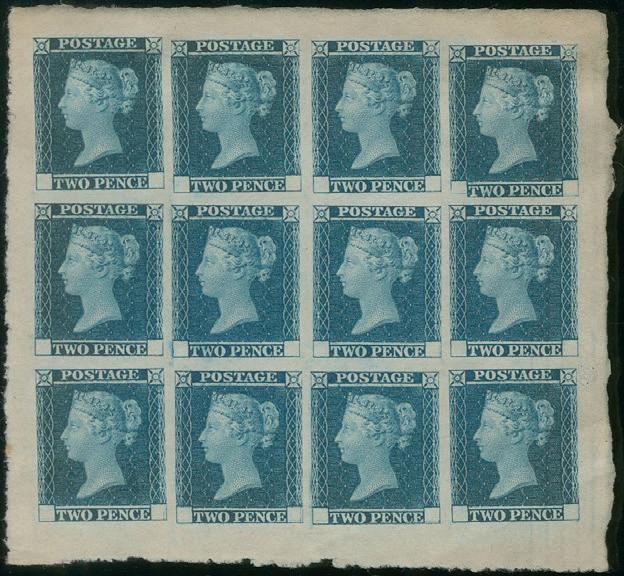








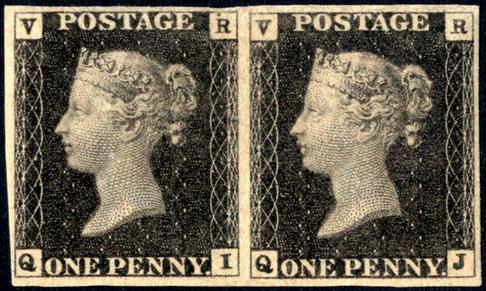
299 Volume 101, Number 5 Collectors Club Philatelist Founded in 1919 CORINPHILA AUKTIONEN AG WIESENSTR 8 · 8032 ZURICH · SWITZERLAND Phone +41-44-3899191 www.corinphila.ch CORINPHILA VEILINGEN BV AMSTELVEEN ∙ NETHERLANDS Phone +31-20-6249740 · www.corinphila.nl CONSIGN NOW ! O NSIGNMENT MPANY Next Corinphila Auction: 28 November – 3 December 2022 Separate ‚hard bound‘ Auction Catalogues for ‚one country‘ or ‚single owner‘ a specialty We are quite willing to discuss larger holdings in your own home. Latest date for consignments: 5 September 2022 LANARCA / CYPRUS
The Mulready: Conception to Destruction
Thomas Slemons, FRPSL
Prior to May 6,1840, the majority of correspondence was business or legal. The cost of sending a letter was very high and the procedure complicated. Ordinary persons rarely sent personal letters.
Rowland Hill began the period of postal reform in 1837. It took more than three years to realize the Uniform Penny Post (UPP) which included the creation of adhesive postage stamps and postal stationery. The stamps were to be affixed to the front of a letter written on ordinary stationery. Postal stationery was to be printed in two denominations, one penny and two pence. The one-penny rate was for weight up to one half ounce and the two pence was for weight more than one half ounce up to one ounce. Each rate came in two forms: a letter sheet and an envelope. Prior to this, envelopes were rarely used. A part of the calculation of the postage rate for a letter was based on the number of sheets of paper. An envelope was considered a sheet of paper and increased the cost for the letter. Another aspect considered was increased efficiency within the postal system. Prior to the creation of the Uniform Penny Post, a letter could be sent prepaid or unpaid at the same rate. Mistrust of the post office to deliver a letter was a factor in sending the majority of letters unpaid, knowing the addressee would pay for the letter on delivery. To eliminate this inefficiency and provide more fiscal control, the goal was to have letters sent prepaid. To discourage sending a letter unpaid, which was still allowed, a double rate was charged for the unpaid letter. Additionally, a letter that was sent and exceeded one half ounce or one ounce, a penalty was charged of double the deficiency. These considerations dictated the stationery have its value printed on it.
While all factors seemed simple, the journey to final production was confronted with numerous impediments. The first was protests by stationers that the government was printing stationery and would harm their livelihood. A sheet of writing paper cost about a quarter of a penny – a farthing – at a stationery shop. To solve this issue, it was decided to add a farthing to the cost of the postal stationery. Security was the next area of major concern. The paper to be used had to be made in such a way as to prevent forgery. The value of a penny at that time was significant and they did not want a print shop producing forged postal stationery. A producer of quality security paper was selected, and the paper had cloth threads imbedded in it. These threads were erroneously described as “silk” for many years; later research found them to be cotton. As the concepts for production continued, two further security issues were debated: further prevention of forgery beyond the use of security paper and prevention of fraudulent reuse. These issues will be discussed later.
From the artists considered to illustrate the front of the postal stationery, William Mulready was chosen. Other than showing the postage value, what was to be added was up to Mulready. He was privy to many conversations and saw much in print about the value and benefits of cheap postage. The benefits presented to him were translated into visual images expressing these concepts.
www.collectorsclub.org
300
September-October 2022
Mulready’s artwork was accepted, as it depicted the desired message presenting the benefits of cheap postage to both businesses and the general public.
Final debates returned to security and prevention of fraud. The first of the two final security measures was to have a different identifying number printed on each piece of stationery. This would make counterfeiting more difficult and enable postmasters to recognize a forgery, if they saw the same number passing through their hands repeatedly.
Figure 1. The back of a Mulready envelope showing the security threads that were imbedded into the paper and the Stereo number, A 287, which was, again, to prevent counterfeiting. Keep up to date with what’s happening in
The same time these steps were being done with postal stationery, the postage stamps were being developed with their own security features. The final aspect of the entire system was to develop a canceling or obliterating device for both stamps and stationery. The accepted design is what is now known as a Maltese cross. Every post town was supplied with a Maltese cross canceler. Letters paid with postage stamps were to have the stamps affixed to the upperright corner and struck with the Maltese cross. The final security measure relating to the stationery can only be described as approaching absurdity. To prevent fraudulent reuse of stationery, postmasters were instructed to cancel the stationery in the center of the figure of Britannia, part of Mulready’s design. The absurdity of this security measure was to alert a postmaster who was presented with a piece of stationery with a stamp affixed over the center of Britannia that this might be an attempt of fraudulent reuse. Somehow the previous address and cancellations would have to have been removed for this to have succeeded.


301 Volume 101, Number 5 Collectors Club Philatelist
your club: www.collectorsclub.org
Figure 2. A Mulready canceled by a red Maltese cross directly on the figure of Britannia as directed to prevent fraudulent reuse.
Simultaneously, with the development of stamps and stationery, the system to handle the increased volume of mail resulting from the cheap postage was also being evaluated and enlarged. Every post town was required, on three different occasions, to report the volume of mail it handled in a week. Based on these reports, it was decided that the system could operate with the projected increase in mail. In every county there was an individual known as a stamp distributor. Each of these had, as required, sub distributors. These distributors were part of Inland Revenue and dealt in revenue stamps and with no connection to the postal system. To ensure maximum availability of stamps and stationery to the public, distributors were brought into the postal system and, when available, were to begin selling postage stamps and postal stationery.
During the period when stamps and stationery were being developed and prepared for distribution, it was decided to send a one-month supply of all stamps and stationery to every post town and stamp distributor. This included a similar one-month supply for the sub post offices and sub distributors. Accounts were established for each of these entities and the value of all stamps and stationery to be sent was the starting point for each account. On the close of business on the fifth of each month, all reported their sales of 1d and 2d stamps and 1d and 2d envelopes and letter sheets, sent payment for the total sold and ordered what they anticipated needing for the following month.
In the last week of April 1840, all shipments were prepared and shipped to arrive throughout the country by May 1, 1840. All items were to be available for the public to purchase on May 1, but not valid for postage until May 6.
There was wide publicity available about the stamps and stationery, but there was no prerelease of information about the design on the envelopes and letter sheets. There is no recorded praise or admiration of the design. Here is the design and its meaning.

302
September-October
www.collectorsclub.org
2022
Figure 3. Top Center: Britannia sending her messengers to all parts of the world. Top Left: Trade with Asia from the West to the East. Top Right: Trade with the West Indies and the United States. Lower Left: A letter bringing comfort to those in their sick beds. Lower Right: A letter from an absent father to his wife and children

What followed within a few days, on May 12, was Rowland Hill’s comment in his diary: “I fear we shall be obliged to substitute some other stamp for that designed by Mulready, which is abused and ridiculed on all sides.” Note that Hill used the word “substitute,” not withdraw. Maj. E.B. Evans, a famous philatelist of his time, in his book of 1891, The Mulready Envelope, fed the misconception of withdrawal by stating, “within a week its withdrawal, in favour of something more commonplace, was recognized as necessary.” The statements of Hill and Evans were so misinterpreted, they became “fact” that Mulreadys were withdrawn soon after May 1840. Nothing could be further from the truth. Work on a substitute for the Mulready began and was finally released to the public in London on Feb. 10, 1841, known as The Penny Pink.
Time
proven Showgard® Mounts...

–Showgard Mounts are the choice and recommendation of experienced collectors. –For over 25 years Showgard Mounts have proven perfectly safe for stamps under every climatic condition in all parts of the world.
–It is a philatelic fact that collectors switch to Showgard Mounts as they gain in experience. It’s a sensible idea to start and save with Showgard Mounts. At dealers everywhere. Available with Dark Display or clear see-through background.
For Free Sample and Size Gauge Please Write
VIDIFORMS CO. INC.
Showgard House 115 North Route 9W Congers, NY 10920
303 Volume 101, Number 5 Collectors
Club Philatelist
Figure 4. The Penny Pink envelope, the replacement for the Mulready stationery, released Feb. 10, 1841. The Penny Pink letter sheets were not created at the same time. They were released on April 18, 1844.


The size of supplies of Mulreadys sent to post offices in the initial distribution varied and was based on estimated monthly use. At the close of business on June 5, 1840, and on all subsequent months, postmasters completed monthly reports of sales of all stamps and stationery and paid for items sold. At the same time, they estimated their sales of all items for the next month and ordered the quantity of each necessary as a part of their end-of-month report. Thus, if Mulreadys were not being sold, there was no need to order more. As time passed and Penny Pinks were available, they were ordered instead of Mulreadys.
The unexpected demand for Mulreadys came from the business sector of the economy. Printers, booksellers and stationers were quick to recognize a profit potential, selling their own products, services and advertising for other businesses. After printing advertisements on the inside, much like the newspaper classified ads of today, they were able to sell the Mulreadys to the public at a heavily discounted price – as little as 9d per dozen, versus the post office price of 15d per dozen. Individual businesses followed with advertising for themselves. This was the birth of what we now term “junk mail.”
Figure 5. A Mulready advertisement from a firm in London containing multiple advertisements. The number of Mulreadys required to produce the quantity promised would have had to have come from Somerset House, which held stocks to fill the order.
Banks soon followed, using Mulready envelopes, then transitioning to the more practical letter sheets. By December 1840, insurance companies saw the potential for advertising and one company offered to have its agents’ names and particulars printed inside and sell them to their agents at a discounted price of
304
September-October 2022
www.collectorsclub.org
10d per dozen. The latest large volume users of Mulreadys were the tax offices, mainly in Scotland, in 1841 and 1842, which ended with the withdrawal of stocks.
In the case of stamp distributors, initial supplies sent were much greater, as they were seen as suppliers of much larger quantities than any one-month supply sent to postmasters. When looking at promised sales of Mulready letter sheets produced by advertisers, that demand for Mulreadys to be used for printed advertisements, far exceeded the number that any post office would have had on hand as stock. Purchasers of large quantities had an option of purchasing from stamp distributors or directly from Somerset House in London.

In late November 1840, it was belatedly observed that Mulreadys were not selling to the general public and the decision was made to stop printing them. The existing stock on hand was judged to be adequate to meet projected needs. A bit later they realized that there was a large stock of the security-threaded paper still on hand, but no use for it. The decision was made to use it to produce the Penny Pink envelopes. Some early production envelopes have security threads, but these disappeared after the supply of Mulready paper was exhausted.
On Nov. 15, 1842, at a meeting of Inland Revenue, withdrawal of the stocks of Mulreadys was discussed. It was decided to begin the withdrawal of stocks from stamp distributors. It was also decided to prepare a notice, instructing the withdrawal, but not to send it to all distributors at one time. The notice was sent gradually, lest they be overwhelmed with the quantity returned.
instructing the with rs at lly,
Figure 6 (above). The front of the Mulready shows that punch has removed the value and the Stereo A 299 shows. Right: The back of the destroyed Mulready envelope with the annotation. The identity of the initials is unknown.

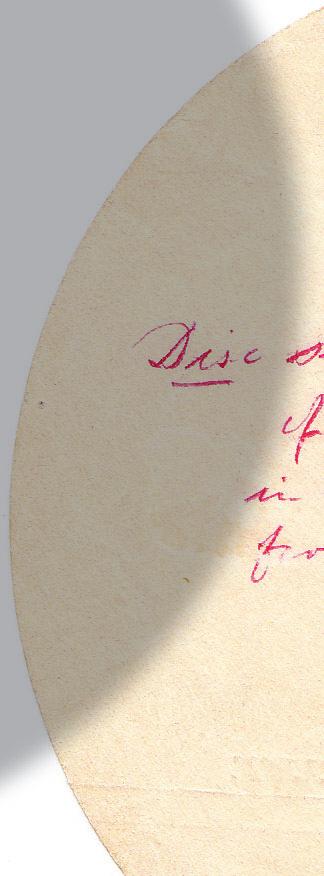
Collectors Club Philatelist

305 Volume 101, Number 5


On Dec. 2, 1842, Inland Revenue received the first document of return of stocks from Mr. Humphrey of Sudbury, Suffolk, the head stamp distributor for the County of Suffolk. It stated, “I have returned the stock of old postage covers and envelopes by wagon.” These returns of stock took several years. No such requirement for postmasters to return their stock exists in official documents.
Below: Full formes of the Mulready lettersheet and Mulready envelope.


306
www.collectorsclub.org September-October 2022
Time and normal use had dwindled those stocks. Normal use of Mulreadys, excluding advertisements, is rarely seen after late 1844.
The next problem faced was how to destroy the massive amount of returned stock. The first effort, burning them in furnaces, proved impractical. It has been reported that a machine was constructed to destroy them. No patent or factual description of the machine has been found. An article in 1982 described a circular disc had been found that had been punched from the center of a Mulready envelope. Many years later, the disc appeared for sale and is seen in Figure 6 with a notation on the back. The punch that destroyed the envelope removed the value, one penny, thus demonetizing it. A similar two-penny envelope has been discovered in the Cole papers that are held in the Victoria and Albert Museum in London. Looking at the layout of the formes Mulready letter sheets and the distinct difference of the formes of Mulready envelopes, demonstrates that the machine had a movable punch or punches to position it or them to punch out the center precisely. It was probably hydraulically operated to punch through stacks of formes of Mulreadys. In the case of the one-penny disc, it is from a second series envelope. This makes sense in that the Second Series envelopes had very little distribution and would have been in the remaining stock at Somerset House. The disc is the only example recorded in private hands.
Inland Revenue documents confirm the massive amount of destroyed Mulreadys was sold to a paper mill, recycled into pulp and thus retuned to life in a new form of paper.
About the Author
Thomas Slemons created the numbering and descriptions of the Mulready advertisements as listed in the Stanley Gibbons Queen Victoria, Volume 1, Part 1, 1st Edition of the Great Britain Specialised Stamp Catalogue

He is currently writing a book about the Mulready and its advertisements. If anyone can add to what is contained in this article or any new advertisement not listed in the Stanley Gibbons catalog, it is welcome.
Slemons would like to receive scans of any Mulready advertisement. Please scan at 300dpi or better, fully opened, the front as well as the advertisement, so that origins, dates and destinations can be recorded. These will be included in a census of all recorded uses of the advertisements. Contact information: Thomas.Slemons@gmail.com, Thomas Slemons, 1410 Timber Trl, Greenwood IN 46142-1143.
307 Volume 101, Number 5
 Collectors Club Philatelist
Collectors Club Philatelist
Don’t forget! Our library is a great member resource! Online CCNY Library information is available: www.collectorsclub.org/the-collectors-club-library/

Noted in Passing on the Auction Block
Matthew Healey
Notable items featured here are from recent auctions that were advertised in the Collectors Club Philatelist. Members who do business with these firms should be sure to thank them for their support of the CCP. If you have spotted – or personally bought or sold – an item you feel is worthy of inclusion in the next round-up, no matter the price, please drop a note to secretary@collectorsclub.org

Once in a Lifetime CHF 634,400
Corinphila Auctions, Zurich: Sales 284-290 including the Besançon collection of British West Africa, May 27-June 4, 2022, Lot 5251. Further details at corinphila.ch
Burrus didn’t have them all. Caspary didn’t have them all. Dale-Lichtenstein didn’t have them all. The list of major 20th-century collections that lacked this rare trio of Niger Coast provisional surcharges is a list of virtually every major 20th-century collection: that’s how rare they are. Produced at the remote outpost of Old Calabar in the onetime Oil Rivers Protectorate in 1893, the stamps were more of an accounting maneuver than a postally necessary issue. Nonetheless, their status was undoubtedly official, so they found their way into the world’s catalog listings and therefore became sought after by every completist. It all began with a shortage of low-value stamps, which led the local postmaster to surcharge some of his 2d and 2½d G.B. “Jubilee” stamps, already overprinted for use in the colony, with the words “Half penny.” However, as those stamps had already been accounted for in the ledgers, the markdown created an accounting shortfall. To make up the deficit, the local postmaster cleverly gave a few 5d and 1-shilling stamps a big, fat 10- and 20-shilling surcharge, respectively, in various colors and sold them to collectors. He only needed to do this to a few examples to balance the books: the census stands at three 20/- singles known in black, three or four in red and two in violet (with an additional one inverted). Subtract one of each lying in the Royal Philatelic Collection, and it’s no exaggeration to say these are just about the rarest British Empire issue of all time – certainly among perforated stamps. None is known used. Corinphila’s offering of all three 20/surcharge colors simultaneously was a momentous event: the violet surcharge, ex-Ferrary, last appeared at auction 100 years ago; more recently, it was in the collection of Renato Mondolfo. (Her Majesty’s example of the violet surcharge, ex-Duveen and Hind, is inferior to the one offered by Corinphila.) Bidding for the three started at an almost-affordable 160,000 Swiss francs, and finished up at an astonishing 520,000 hammer. (Realization includes 22% buyer’s premium.)
Collectors Club Philatelist
309 Volume 101, Number 5
A Rare Set of Proofs
C$23,700

Eastern Auctions, Bathurst, N.B.: The AFAB collection of Newfoundland and Canada, Pt. 2, June 22-23, 2022, Lot 10. Further details at www.easternauctions.com
Described by the auctioneers as “the largest formation of Newfoundland proofs” in its 40 years in business, the offering comprised archival pieces, including sketches, essays, die proofs, color trials and progressive plate proofs, with an impressive degree of completion. One of the standout lots was a set of proofs for the 1857 “St. Johns Newfoundland” issue produced in England by Perkins Bacon, the firm that created the Penny Black. Only one sheet of each denomination in the set was printed in black on thin card; the complete set in blocks of four (and one block of six) was painstakingly assembled by a former collector, Dr. Chan, from diverse sources over a long time before being sold by Christie’s in 1995. It is believed that only one other such set can possibly exist, and some of those blocks may have already been split into pairs or singles. The 1sh block with a pencil notation in the margin reading “Rose ink for 1,250 sheets in all,” shown above, is Ex-Dale-Lichtenstein. (Realization includes 18.5% buyer’s premium.)

Let the Bidders be the Judge €7,320
David Feldman, Geneva: Spring Auction Series, June 13-17, 2022, Lot 10117. Further details at www. davidfeldman.com
The market is a wonderful thing sometimes. Ninety-nine-point-nine percent of the time, auctioneers make a reasonably accurate estimate of what a given lot will bring, based on their experience and their ability to draw on information about comparable past sales. The rest of the time, they can be as surprised as anyone by what something ends up bringing. Feldman’s
www.collectorsclub.org September-October 2022
310
June sale of classic Egyptian rarities included plenty of big-ticket items that brought at or near their four- and five-figure estimates. Then there was Lot 10117. Consisting of a small fragment of a cover bearing stamps from two different early issues, tied by a “Post Egiziane/Mehalla/Stazione CDS, it was described as an “unusual and extremely rare mixed franking” and estimated at €460 – though the individual stamps are both cheap. However, the market had other opinions, and the lot was hammered down for €6,000. Caveat vendor! (Realization includes 22% buyer’s premium.)

Tropical Beauty
£7,200
Stanley Gibbons, London: the Graham Booth collection of the Cayman Islands, June 15, 2022, Lot 28. Further details at auctions.stanleygibbons.com
The late Graham Booth, FRPSL, was an avid collector of West Indies postal history, having first developed an interest in the philately of the Cayman Islands when he retired there after a successful career in the pulp and paper industry in Mexico. At one point, he purchased a sailboat in the United States and sailed it with a friend back to the Caymans. He returned to his native England in the 2000s, became active in organized philately and devoted himself to exhibiting, winning a gold for his exhibit on Cayman postal history at New York 2016, among many other honors. His many collections are now in the process of being dispersed at auction, and Gibbons had the honor of offering his Cayman material in June. One of the highlights was this remarkable registered cover, sent from Georgetown in 1907, franked with three ½d-on-5s and three 1d-on-5s surcharges of King Edward VII. The cover received a Mobile, Ala., registry exchange label before being sent on its way to its destination in New York. It found a new home with a bid of £6,000. (Realization includes 20% buyer’s premium).
Remember ...
When buying material from advertisers, please let them know you saw their ad in the CCP. They support both the hobby and your journal!
311 Volume 101, Number 5
Collectors Club Philatelist
CCNY Relocation Update
As you may be aware, we are in advanced negotiations on our projected new, permanent home. We expect to call 40th Street, between 5th and 6th Avenues, home. This area overlooks Bryant Park and the New York Public Library. We will be steps away from the famous stone lions, Patience and Fortitude, very much in the heart of the city, at the crossroads of subway, bus and train transportation. But, of course, we have yet to sign a contract (this is being written in early August) and, in the words of a great philosopher, “it ain’t over till it’s over.”
The move into our permanent home is likely around a year or so away; ultimately, the Club’s needs will be very well served. We will be the only occupant on the floor, and everything at the Club – library, lounge, presentation room, conference and seminar rooms – will be on a single floor and accessible to all (which our old home, sadly, was not). The entirety of the floor will be custom designed to fit our needs.
During this current period, as we transition to a new permanent home, we will strive to move forward without missing a beat. Our journal, The Collectors Club Philatelist, will continue to be published, and our virtual program series continues as previously scheduled. We are planning an extraordinary program series for 2023 and cannot wait until the details are made public. We believe it will be the finest program series ever.
We look forward to seeing our incredible library and Clubhouse memorabilia in a fresh, newly renovated, and re-furnished space. As we progress towards this ultimate move, we will send along “sneak peaks” of the layout and in-progress photos.
We hope you, our members, will come in and enjoy the Club in person, once we are in our new home. Be ready for a very big welcome party!
In addition to face-to-face meetings that are now being held, all Collectors Club presentations are also held online, via ZOOM, beginning at 5:30 p.m. (Eastern).

Although there is no cost, pre-registration is necessary.

312
September-October 2022
www.collectorsclub.org
CCNY Library Update

The Collectors Club Library is being packed for movement into storage. Every bookcase and shelf is numbered, and the contents will be put into corresponding boxes. The club’s special collections, including Suppantschitsch and Ricketts libraries, have been wrapped in glassine and carefully boxed. This is being done under the supervision of Andrea Matura, the club’s executive director. If you don’t pack a library in an organized fashion, unpacking will become a catastrophe. Careful planning is absolutely necessary.
Beyond books, journals, auctions and catalogs, the library contains some archival documents. These are philatelic records donated to the Collectors Club over the years, perhaps best explained as examples. In 1940 Edward Spring Knapp, a collector of classical stamps with many on covers, died and his estate arranged for the sale of the collection. Prior to the sale, photographs of each cover were taken and placed into 186 small photograph books that were donated to the Collectors Club Library. Such foresight is rare, and the club is privileged to have this archive. The books, numbered 1-185, have been wrapped in glassine and placed in archival grade boxes to help preserve and protect them. There are 186 volumes, including volume 58 and 58A, and are present and accounted for. Figure 1 shows the process of putting all the albums in the correct order, preparing an index and placing them in the archival boxes. All these photographs are in black and white. Figure 2 shows a card that accompanies each photograph identifying it as a gift from Y. Souren and Harold Carhart. The Philatelic Research Laboratories, owned by Y. Souren, retained Knapp’s notes. It had previously identified the “Knapp Shift” on Scott No. 2 as a genuine stamp, but years later, aided by sophisticated analysis, it turned out to be bogus.2 In addition to classical U.S. stamps, Knapp’s legacy included U.S. No. 1 and 2 on cover, locals, banknote covers, fancy cancellations, confederate stamps and covers, 1850-1930s on covers as well as many covers that were trans-coastal, gold rush and to central America. There are 1,861 postal stationery, western express, pony express, steam covers and pre-stamp U.S. covers. In Book 77 there are Penny Black covers, Mulready envelopes and Canada small queens on cover. Beyond that, classic Brazil with Dom Pedro Covers, Sweden and Norway, some Napoleonic covers, German and Italian states and more. The Knapp collection also contains a lot of hotel covers with great graphics. That is a lot but, after all, there are 186 books of photographs!
A second example of an archival document is a set of “Chiu’s Supplements” as typed manuscripts. These are titled “Interesting items about Chinese Stamps.” Mr. C.W. Chiu produced Chiu’s
313 Volume 101, Number 5
Collectors Club Philatelist
Figure 1. Overview of Knapp Collection.
Supplement between 1952-64 as a magazine. The document contains handdrawn maps, overprints and other features. It included an extensive study of silver and gold yuan overprints and a significant amount of information on Manchurian Local Overprints. The original typed manuscripts were bound into three volumes and donated by Dr. Warren G. Kauder. Not all donations were made in such an organized manner, and some will require serious research effort to organize. There is, for example, a box labeled “Calvet M. Hahn Research Collection.” It is filled with notes and awaits a scholar. Calvet M. Hahn was one of the most prolific research authors on stamps and postal history. He was inducted into the Philatelic Writer’s Hall of Fame in 2001, and posthumously into the American Philatelic Society Hall of Fame in 2006. When the library reopens, we would welcome a scholar to study the contents of this box, as well as the many other treasures of the Collectors Club Library.


314
September-October 2022
www.collectorsclub.org
Figure 2. The donation card from Souren and Carhart.
Figure 3. An example of a cover from the collection.
Nobody does it better.
Heritage—Over 75 years of experience in expertizing stamps and covers from the greatest collections ever formed.
Expertise—An outstanding staff of in-house experts and consultants with lifetimes of experience backed by a 250-volume reference collection and the latest in high technology equipment.
Authority—Recognition as a leader that comes from a time-honored history of knowledge and expertise.
Certificates—With over 580,000 certificates issued to date, a PF Certificate is recognized as the most authoritative and reliable opinion in all of U.S. philately.


Add value to your collection with a PF certificate.
The Philatelic Foundation


We’ve moved! Please note our new address: 353 Lexington Avenue, Suite 804 New York, NY 10016 tel. 212-221-6555
PhilatelicFoundation.org PFsearch.org
315 Volume
Number 5 Collectors Club Philatelist
101,
Scott 11, graded 100-J. PF certificates 521651, 176262
Scott 233, graded 98-J. PF certificate 431008
Scott 17, graded 100-J. PF certificate 535539
Book Reviews
Paolo Bianchi, Lettres de la Grande Armée - Letters of the Grande Armée, Histoire de l’organisation des postes au sein de la plus Grande Armée du XIXème siecle (Letters of the Grande Armée, History of the mail organization inside the greatest army of the XIX century), hardbound (8½- by 12-inch), color dust jacket, 144 pages, 182 color illustrations, one map; in French and English. Published by Paolo Bianchi and the Musée des Timbres et de Monnaies de Monaco, Translation by Chris King, 2021. For purchase, contact patrick@maselis.be

The author of this splendid monograph is well known for his book on the Postal History of Eritrea and for his monographs, Victor Victoria and History of the Postal Service in Italian Somalia, from its origins to 1941. He is described as an eclectic collector who has largely focused on African colonies and has won several large gold medals with his collections of Imperial Russia and the Kingdom of Sardinia. During the last decade he has spent considerable time on the study of the postal services of the Grande Armée, to provide new data and detailed information mainly on the second Grande Armée during the Russian Campaign of 1812, a most difficult area of research due to the rarity of the pieces available to postal history collectors.
Having had the privilege of knowing the author of this book some 50 years ago when he collected Napoleonic covers of the Italian conquered “departments,” as well as Confederate States, I have seen his ascent to higher heights seldom reached by other scholars.
Published in 2021, the bicentenary year of Napoleon’s death, this volume has widened the wealth of information available to historians and postal historians. The names and volumes of De Franck and Albert Reinhardt are the first to come to mind about great scholars who have explored the same area.
Bianchi, on the other hand, has brought to light new postmarks and, as pointed out by Maselis in his foreword to this book, “Bianchi takes us to the heart of the often-tragic events that took place on the battlefields. He uses his publication to highlight all the horrors of war. In particular, the rare letters posted during the retreat from Russia are extremely moving and send shivers down the spine of the reader with their accounts of human dramas and the inescapable presence of death.” The rarity of letters sent during the retreat is explained by the author who quotes relevant comments by senders that would clearly indicate that mail was confiscated, stolen or intercepted by the Cossacks.
www.collectorsclub.org
316
July-August
2022
In his foreword, Bianchi highlights the allure of the military postal history of the Napoleonic era: “The amazing excellence and system of the Grande Armée postal organisation is, for us, intelligible only through the letters, always including the text, which shows marks and manuscript notes and numbers.”

The nightmarish retreat is summed up by a letter from Lieutenant Dupont who stated, “I myself who am back can’t work out how I got away because I spent two months eating only horse meat more raw than you can believe ... out of 350 men that left with our Regiment we barely returned from Moscow with 50 men.”
The book is richly illustrated and ends with some precious and well researched sections devoted to first and second Grande Armée free franks handstamps (used or handwritten on letters sent free of charge in observance of official regulations), a list of postmarks of the Second Grande Armée and a complete bibliography. Equally most useful is the section providing an 18-page list of the postmarks of the Second Grande Armée, including related déboursé postmarks; and last – but not least – an exhaustive bibliography.
— Giorgio Migliavacca
317 Volume 101, Number 5 Collectors Club Philatelist
The Collectors Club
Membership Update: June 19 through Aug. 21, 2022
We are pleased to welcome the following new and reinstated members.
Approved by the Board of Governors:
June 28, 2022
Non-Resident
Carlson, James D Middletown, Conn. Cortese, Joe Pittsfield, N.H.
August 9, 2022
Non-Resident
Harvey, Brian M. Rogers, Ark.
Overseas Nair, Shivshanka; Ambassador Lisbon, Portugal
Congratulations to our new members. A membership certi fi cate will be forwarded to the address on fi le for each. Please do keep us updated as to current address and email so that we can continue to serve you. Electronic outreach is increasingly important as we continue to expand our o ff erings. Our website ( www.collectorsclub.org ) receives ongoing enhancements based on member feedback. Please contact us at info@collectorsclub.org with feedback, comments or questions.
Applications Received
Putney, Christopher J. Washington, D.C.
Please note that The Collectors Club will be dropping members who are not current with their 2021 and 2022 dues payments. If you feel that there is an error or prior payment has been made, please contact Executive Secretary Andrea Matura at info@collectorsclub.org.
In these uncertain times we are not always aware of events or address changes in a timely manner. Please help by keeping us informed at info@collectorsclub.org. We recognize the many members who have taken advantage of our online facility for applications, and dues/donations payments.
Respectfully submitted, Mark E. Banchik, Membership Co-Chair Lawrence Hunt, Membership Co-Chair
www.collectorsclub.org
318
September-October 2022

Page Advertiser

Index to Advertisers
Page
Advertiser
308 Abacus Auctions 281 Colonial Stamp Company 298-299 Corinphila Auctions Ltd. 319 Eastern Auctions, Ltd. 265 David Feldman 276 Christoph Gärtner GmbH 269 Stanley Gibbons
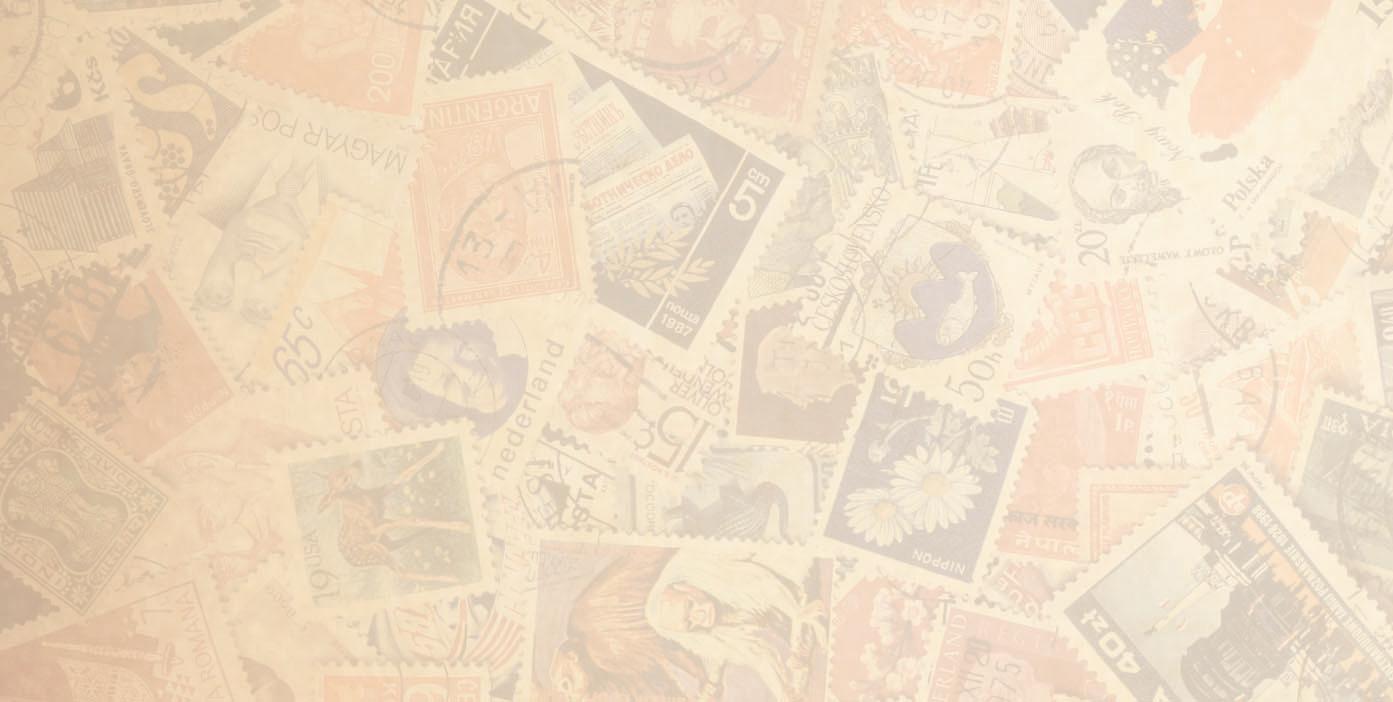
Fr. Inside H.R. Harmer, Inc. 266-267 Heinrich Köhler
261
Le Timbre Classique 315 Philatelic Foundation Inside Back Cvr. Schuyler Rumsey 275 Sellschopp Auctions Back Cover Robert A. Seigel 289 Sparks Auction 320 Minuteman Press 303 Vidiforms Co., Inc.








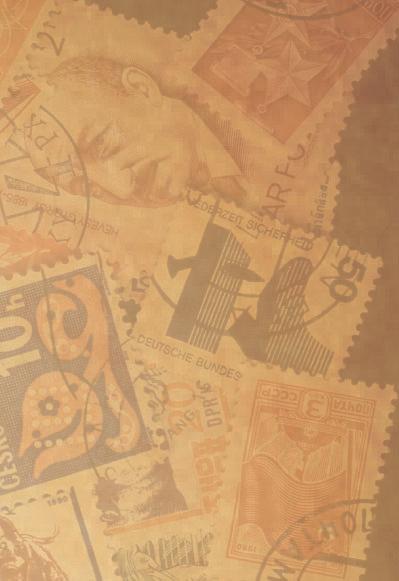
Please Remember ...
Those who advertise in the Collectors Club Philatelist are supporting both our organization and the hobby in general






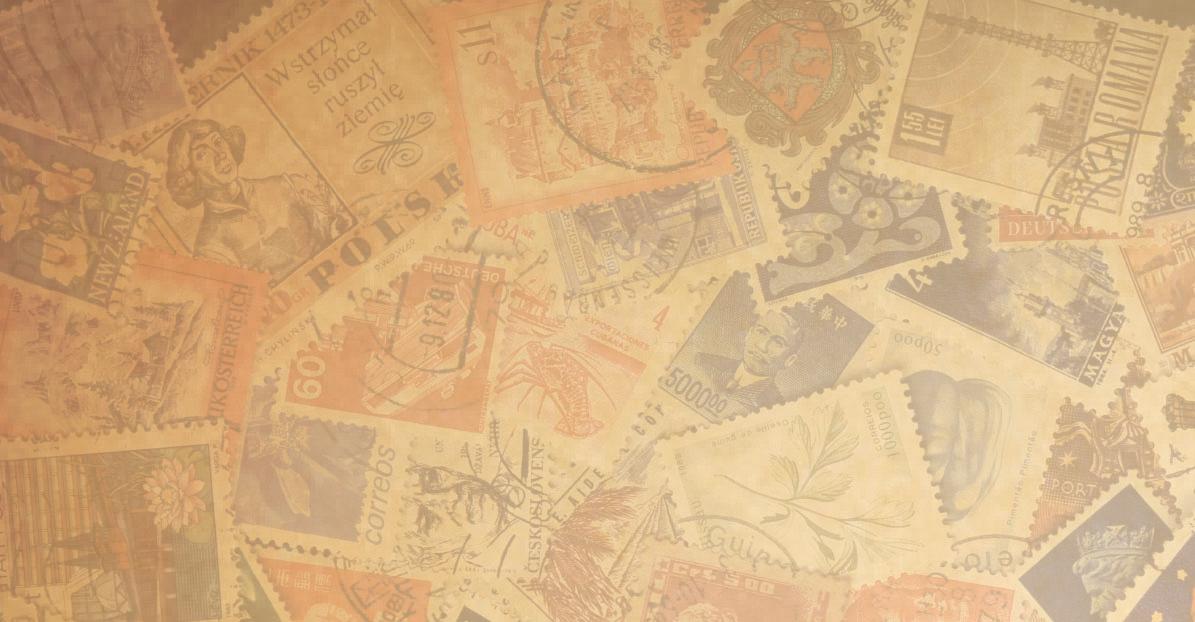
If you purchase stamps or covers from these fine companies, please let them know you saw their ad in the CCP.
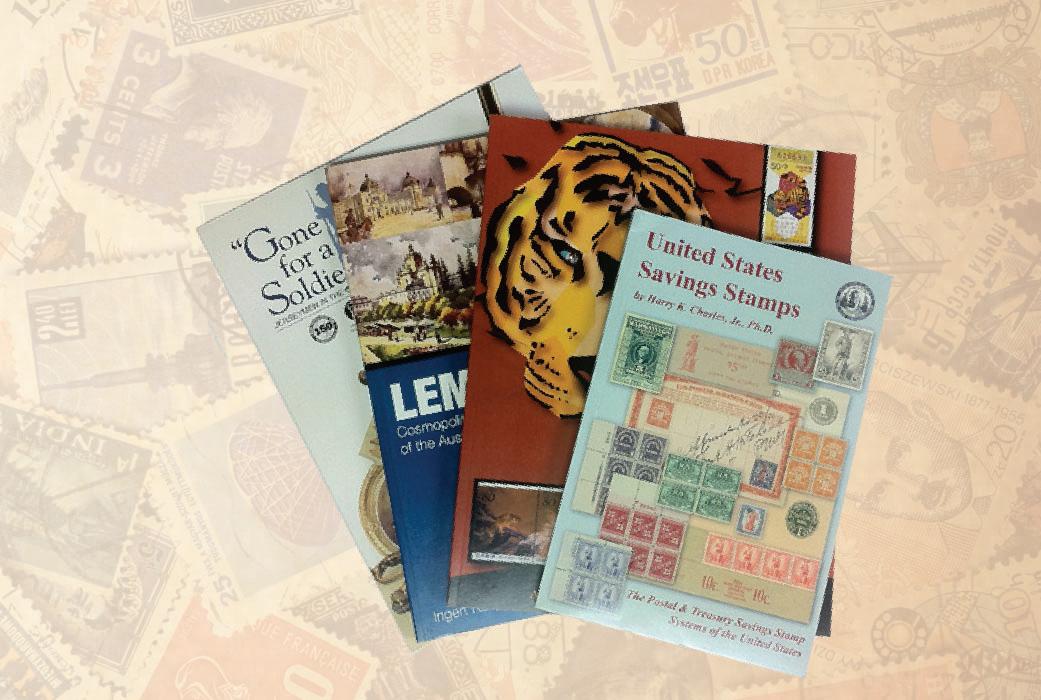
320 www.collectorsclub.org May-June 2022 MEMBER
Consign now to our Westpex Auction to be held in April. Contact us now as space will be limited for this event.
Knowledge. Experience. Integrity. Things that cannot be bought, bartered or sold. Yet they’re responsible for realizing the highest prices for your stamps. At Rumsey Auctions, we’ve built our reputation on these qualities as much as on the impressive financial results we achieve for our clients. Please call or email us and let us show you how much we can do for you.


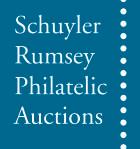
When choosing an auction house, you should also consider the things they don't sell.
Samoa Express Combination Cover, Realized $57,500
Cape of Good Hope Cover to Hungary, Realized $52,250



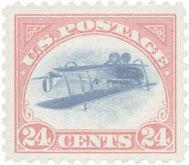
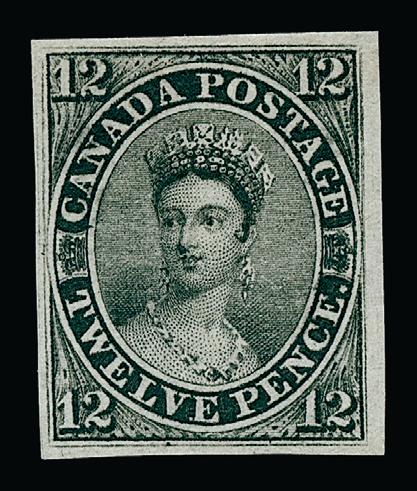



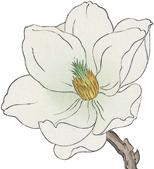


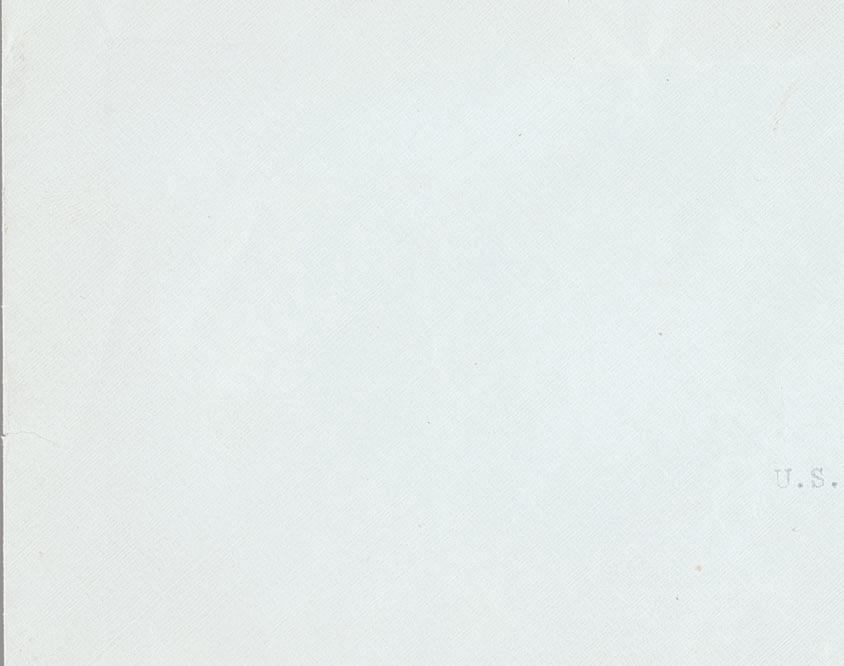

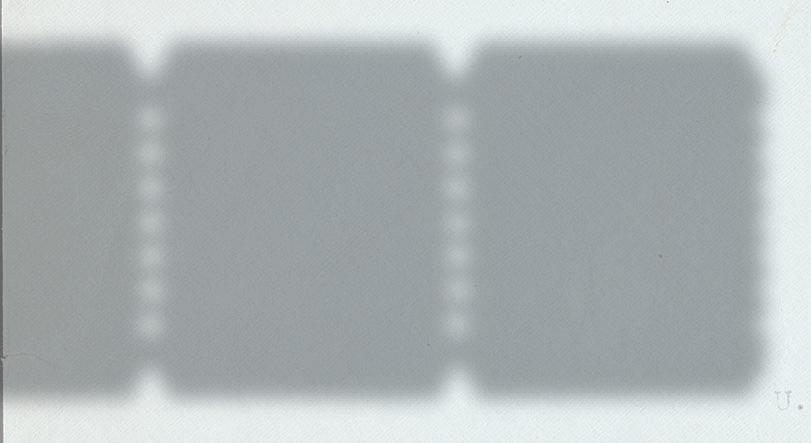
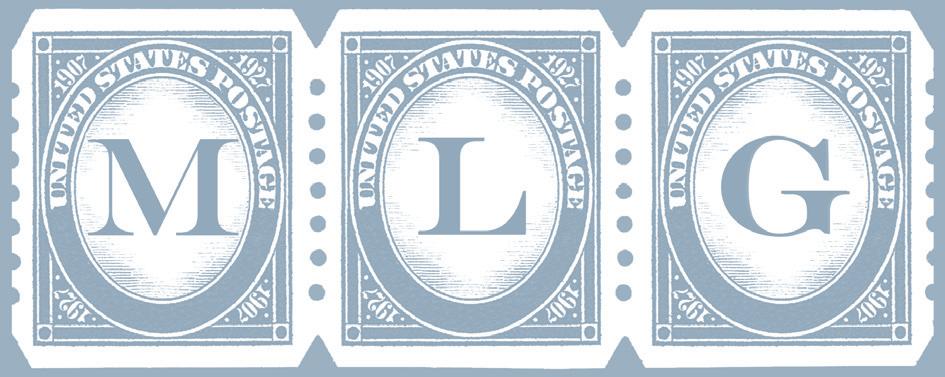
buyers or sellers, Siegel Auction Galleries offers unparalleled expertise, a worldwide client base, financial reliability, intelligent marketing, and the best internet resources and search tools.
NEW ADDRESS STARTING 11/1/2022 TO BE ANNOUNCED Phone (212) 753-6421 • Email: stamps@siegelauctions.com For
America’s premier stamp auctioneer since
theporterW.VennIIcollection unitedstatespostalstationery MAGNOLIA COLLECTION THE UNITED STATES MAIL IN CHINA AND JAPAN United States Vending and Affixing Machine Perforations The Melvin Getlan Collection Part 2—October 2022 Part 1—October 2022 Fall Worldwide sale in association with Charles F. Shreve Part 4—December 2022 SINGLE-OWNER SALES IN SIEGEL’S FALL SCHEDULE
ROBERT A. SIEGEL AUCTION GALLERIES, INC.
1930






















































































































 Mel Kravitz RPSL
Mel Kravitz RPSL











































































 Collectors Club Philatelist
Collectors Club Philatelist



















































